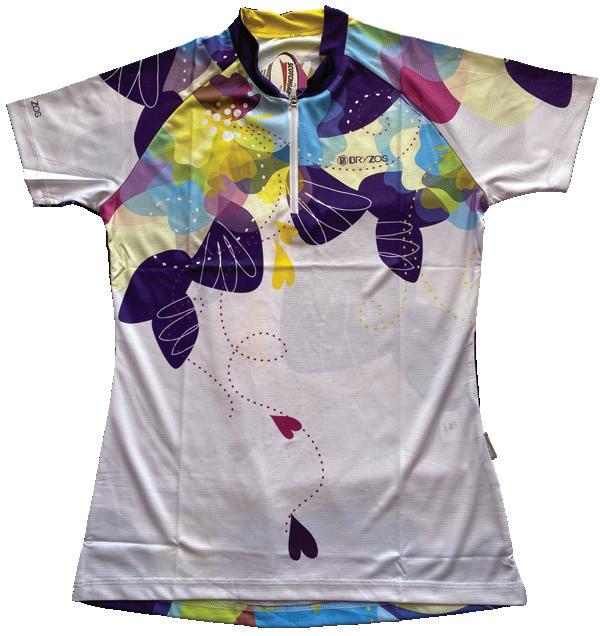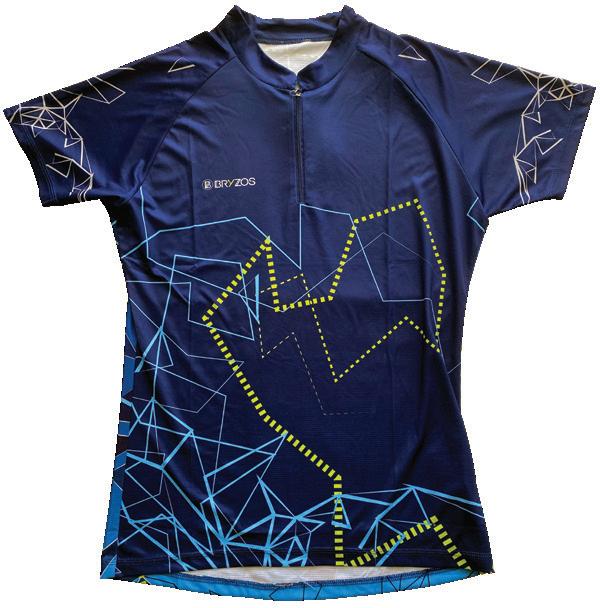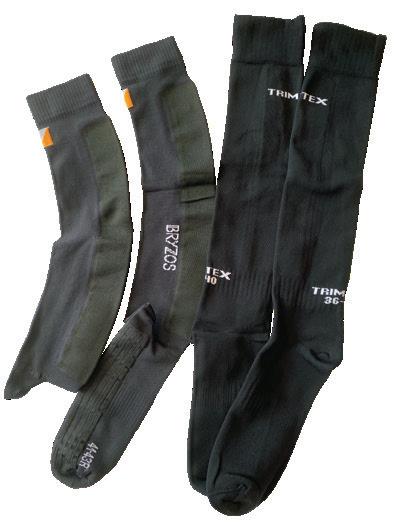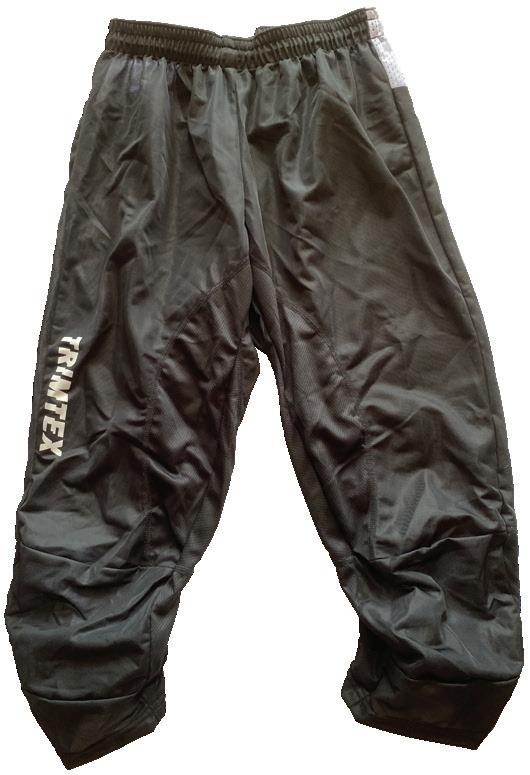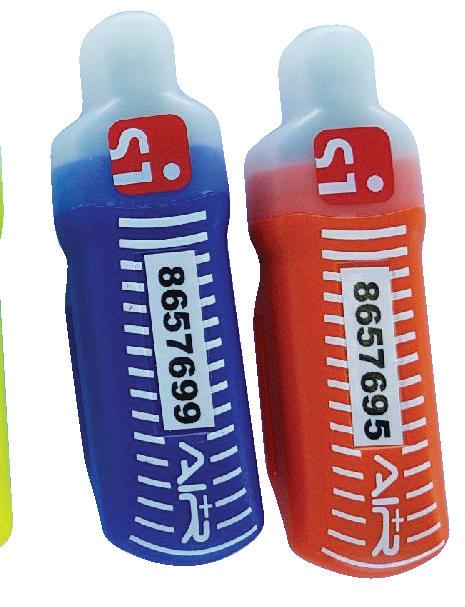






The Australian Sports Commission (ASC) develops, supports and invests in sport at all levels in Australia.
Orienteering Australia has worked closely with ASC to develop orienteering from community participation to high-level performance. Each year Orienteering Australia receivesfunding to support participation in orienteering across Australia.
Partof this funding is being used to support the OA Survey Season. Valuable data has been gathered through member surveys, online forums, club feedback and leader consultations. Insights have been gained into future strategy, volunteering, club needs, newcomer experience, participant motivations. This data will inform the goals, projects and priorities for the next 5 years.
We thank the ASC for their ongoing support of orienteering in Australia.




ausport.gov.au


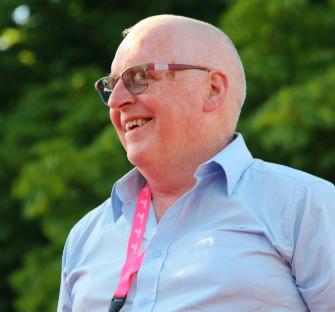
As 2025 draws to a close we can reflect on a most successful Australian Orienteering Championships week in and around Brisbane hosted by Orienteering Queensland (OQ). I extend a sincere thanks to Brenton Gray and his team for putting on a great week of orienteering. It is a heavy week of organisation with the two weekends of championships events in our four main orienteering formats bookending the Australian Schools Orienteering Championships (ASOC). Looking on, I felt this was arguably the most successful ASOC ever conducted. There were record entries and a wonderful social program to support our young orienteers. A huge thank you to Cam Schubert, the OQ ASOC coordinator for his leadership. I extend a sincere thank you to all the volunteers during the week who undertook the less ‘glamorous’ work during the championships. That is things like managing parking, being available in information tents to answer questions, keeping toilets working and in good order etc. Your willingness to volunteer in such roles is critical to events of such magnitude in such a carnival. Thank you, thank you. Our major event attention now turns to the 2026 Oceania Orienteering Sprint Championships to be held on the Central Coast of NSW in late January. For our elite competitors this is an important lead in to the 2026 World Sprint Orienteering Championships. The championships will also provide an opportunity for everyone who enjoys the sprint format to take part in a series of quality events. Under the leadership of Hilary Wood the organising team is working hard to ensure this will be a great event for all of us to enjoy.
On the Orienteering Australia (OA) front, by the time this issue hits your inbox or post box the board and members will have approved a new high-level strategy for the period 2026 –2029. The strategy sets out a range of measurable new initiatives to take our sport forward. Connected to this we are developing an updated and connected Participation Plan as a


Year Aus 3Days Aus Champs ASOC Aus MTBO Champs Oceania Champs
2026 TAS TAS
(forest)
VIC AUS NSW (sprint 2026) AUS ACT (forest 2026-27)
2028 WA VIC VIC QLD (sprint 2028) 2029 ACT TAS TAS ACT (forest 2029)
(sprint 2030) 2031 VIC
(forest 2031)
part of meeting the conditions for Australian Sports Commission (ASC) PlayWell Investment program support. A key part of the framing of this Participation Plan was the current survey of members. This survey was a great opportunity for you to have say about your sport’s direction. We are in the middle of our annual series of OA workshops. These workshops are about engaging our members and broader orienteering community in work across the pillars of the current OA strategy being events, opportunities, relationships, performance and governance. OA has many people now doing many different things to support the growth and quality experiences for our sport. The OA workforce has expanded considerably since we emerged from the COVID-19 pandemic. On behalf of the board, I extend a huge thank you to all our OA workforce, both volunteer and paid, for your fantastic work, support and energy through 2025. The work you do for our sport is fantastic!


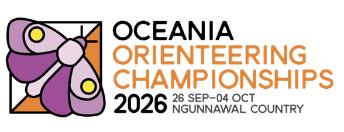

Follow this link to post-print corrections. Check out what mistakes in the current edition have been discovered too late.
BLAIR TREWIN
The recent tragic events at the World Games in China have placed a spotlight on the issue of extreme heat and what it means for orienteering in Australia.

Historically the sport has largely avoided the hotter months in Australia (unlike Europe where summer is a peak competition season), with the summer program largely consisting of low-level evening events, and our major national competitions taking place in spring and autumn. In the last two and a bit years we have had three national carnivals significantly impacted by extreme heat, the Australian Championships in Western Australia in 2023, and Queensland in 2025, and Easter in South Australia in 2024. We have also dodged a number of bullets with regard to fire risk; we were lucky that extreme fire danger days during the 2015 Oceania Championships in Tasmania and the 2017 Australian Championships in NSW happened on days when sprint, rather than forest, events were cancelled, while a fire probably would have caused the cancellation of the scheduled 2020 Australian Long Championships if Covid hadn’t already done it first. International orienteering, and the international sport community generally, is starting to take heat issues more seriously. The IOF has already established an interim extreme heat policy, recommending postponement or cancellation when temperature and humidity exceed certain levels, and is working on a more substantive policy. Climate is also starting to be taken into account more in scheduling, with the World Orienteering Championships in Spain and World Masters Orienteering Championships in Turkey in 2028 both planned for periods outside the traditional summer window.
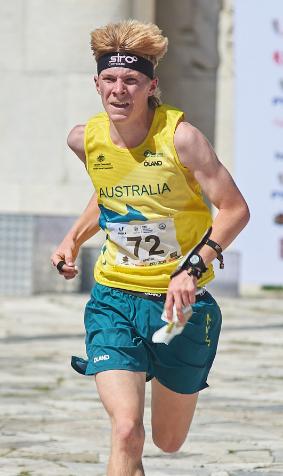
Australian sport is already well attuned to the risks of heat, with summer events typically scheduled for early morning and evening (as anyone who’s got up for a 7 am parkrun start in Queensland will attest). The Australian Championships organisers in 2023 and 2025 were able to show flexibility to bring start times forward on forecast hot days, and generally did what they could to manage the situation. While the timing of holidays makes it likely that Easter and the end of September will continue to be the primary time for our national carnivals, we may need to consider making tweaks to our schedule around this, for example by scheduling the Aus 3 Days for cooler areas in years when Easter is early (under the present rotation South Australia always seems to end up with an early Easter). Planning arenas well is also important; while many arenas used in Australia will have good natural shade, in those which don’t, there may be a need to put up shade structures in hot weather. (We are already more aware of the need for shade than many; at the big European summer events, if you want to find the Australians and New Zealanders, the part of the arena with the best shade is a good place to look).
Our rules give organisers a responsibility for providing water on courses, which is important, but there are ways that competitors can help themselves too. Some competitors carried their own water in Queensland so they could drink more regularly; M21E long distance winner Pat Jaffe gives this some of the credit for his success. The Australian Championships are often a challenge for competitors from southern states who are coming out of winter and are poorly acclimatised to heat; some, like M14 long distance winner Euan Farquharson, trained with extra clothing to become accustomed to the conditions they would face in Queensland.
With the climate becoming hotter and the fire season getting longer, the influence of weather on our events is only going to get greater. It is something we need to plan for.

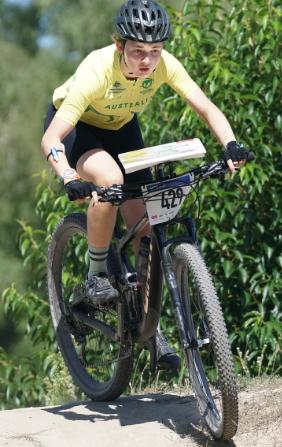

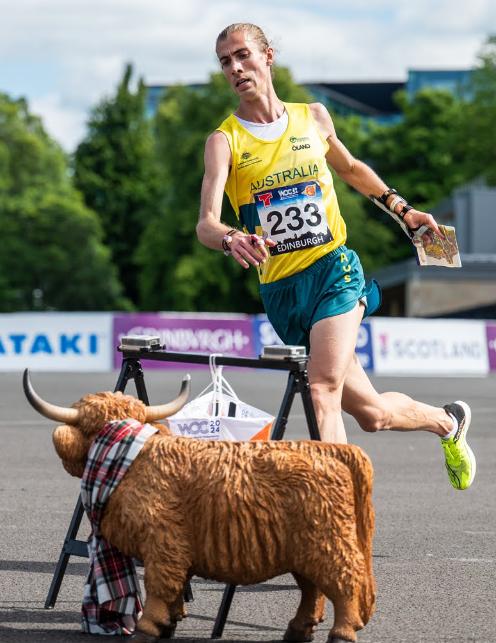



Chair & Director – International (IOF)
Deputy Chair & Director
Director, Finance
17 Gooraway Place, Berowra Heights, NSW 2082
MikeDowling
AndreaHarris
PaulLiggins
Director, Technical AnnaSheldon
Director, Performance & Coaching, IOF Foot O Commissioner
BrettWeihart
Director GayleQuantock
Director, Media & Communications
Director Ex Officio, IOF Council Member
Secretary


TroydeHaas
BlairTrewin
RobertSpry
General Manager
Head Coach
High Performance Administrator, IOF Map Commissioner
Manager, Participation
Manager, Coaching & Officiating Accreditation, Manager, National Sporting Schools Program
ÁrpádKocsik
NatashaKey
FredrikJohansson
DanielStott
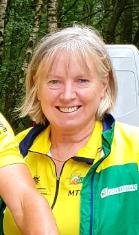







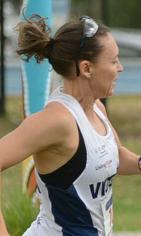









JimMackay Manager, National Awards
Chief Medical Officer
Editor, The Australian Orienteer
DavidHogg
MarkFreeman
Hania Lada Manager, E-News Bulletin
LindaBurridge Badge Scheme Secretary JohnOliver Manager, Eventor Project
National Integrity Manager, Complaint Manager
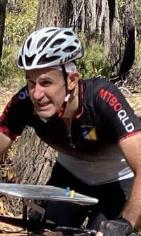

PaulPrudhoe
AndrewShipton Manager, MTBO Development, IOF MTBO Commissioner
Manager, Communications & Marketing
CraigSteffens
LizLeung Manager, Data
Ranking Officer (General)
Ranking Officer (Elite)
ASOC Coordinator
Manager, OA Reporting
Webmaster
STATE ASSOCIATIONS
Orienteering Queensland: secretary@oq.asn.au
Orienteering NSW: secretary@onsw.asn.au
Orienteering ACT: office@act.orienteering.asn.au
NigelDobson
DarrylErbacher
Bruce Arthur
Toni Brown
IanRathbone
Shane Jenkins
Orienteering Victoria: secretary@vicorienteering.asn.au
Ideas: December 27
Items: January 18
Time-sensitive
ISSN 0818-6510 Issue 4/25 (no. 219) DECEMBER 2025
The national magazine of Orienteering Australia Inc. ABN 77 406 995 497
Published four times a year: 1 March, June, September, December. Copies are dispatched in bulk to state associations in the week prior to that date. Print Post Approved PP 236080/00011, (100023602 for NSW).
Editor, magazine design & assembly: Hania Lada, P.O. Box 200, Ringwood East, Victoria 3135. Phone 0493 615 203 magazine@orienteering.asn.au
Printer: Razer Graphix, Factory 6/15 Stud Road, Bayswater.
Regular Contributors: Blair Trewin, Marina Iskhakova, Rachel Collins
Subscriptions: State Association members via State Associations. Join State Associations using Eventor and select the paper option. Other subscribers: refer to the OA website https://orienteering. asn.au/index.php/magazine/ Orienteering Australia website > magazine, or contact editor. Opinions expressed in The Australian Orienteer are not necessarily those of Orienteering Australia.

Contributions welcome! Prior consultation is ideal for major items. Contributors’ texts will be edited according to the magazine’s style guide. The guide is available from the editor and the website https://orienteering.asn.au/index.php/magazine/ Orienteering Australia website > magazine


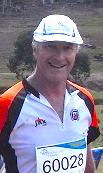



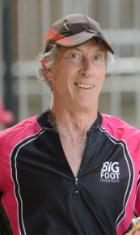

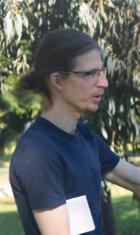

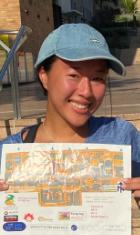

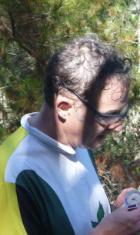



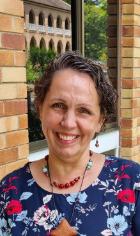

Orienteering South Australia: secretary@sa.orienteering.asn.au
Orienteering Tasmania: secretary@tasorienteering.asn.au
Top End Orienteers (NT): topendorienteersNT@gmail.com
Orienteering Western Australia: oawa.secretary@gmail.com
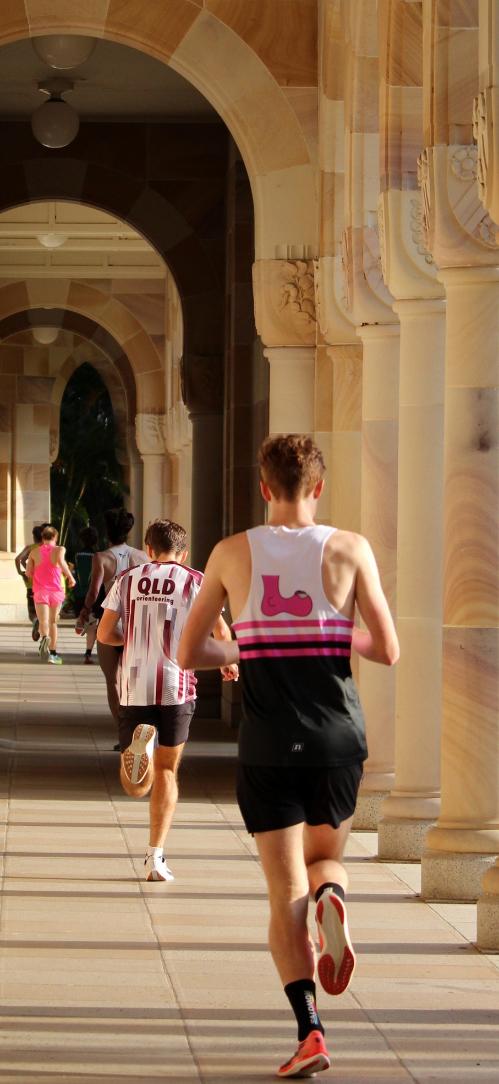

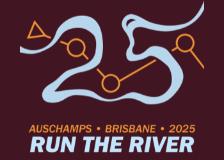
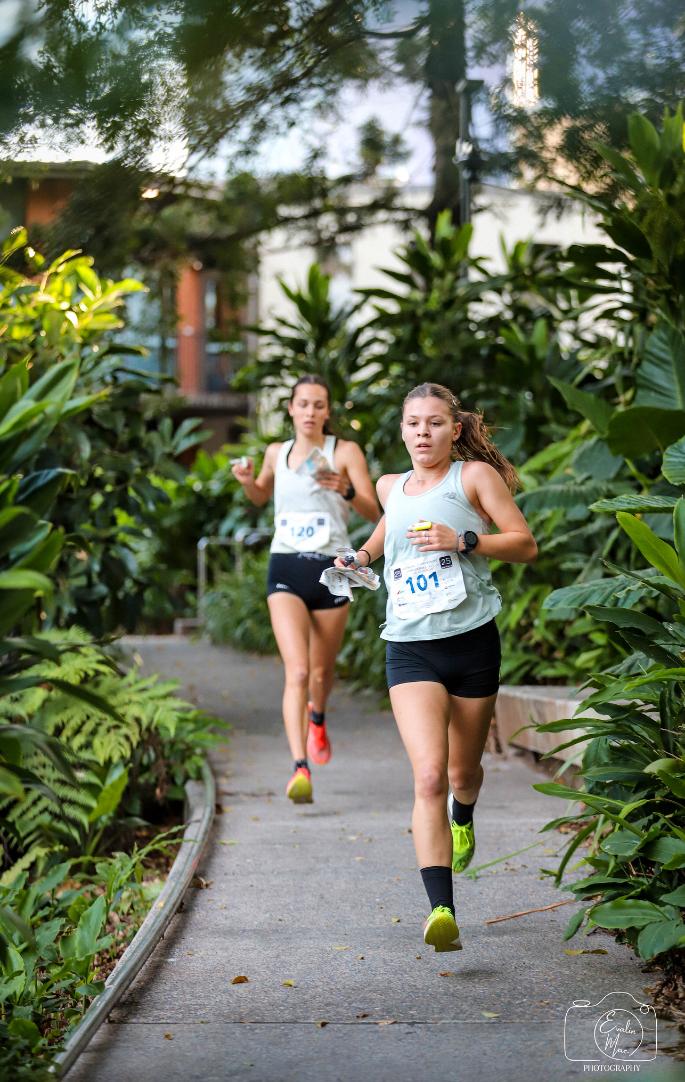


The 2025 Australian Championships week took place in and to the west of Brisbane. This was a change from most of Queensland’s past national carnivals, most of which have taken some distance from Brisbane (the only exception being Easter 2004), and introduced non-Queenslanders to the terrain closer to the city, as well as to some quality urban sprint areas.
Australian Sprint O Championships, 27 September
The week started with the Australian Sprint Orienteering Championships at the University of Queensland. This is a large campus (only part of which was used) and featured some interesting challenges, including some multi-level ones depending on your route choice.
Nea Shingler (NSW) will be a fully-fledged senior soon, but she has been doing sprint races faster than the seniors for a while now, and this event was no exception. She took the lead from the start and was never challenged; Zoe Carter (SA) was the only one to get within a minute of her, and Nea was already 40 s clear of third by #10. Emily Sorensen (SA) made a slow start but finished well to get within the medals.
M21E saw a home-state win as Grant Reinbott (Qld) achieved his first significant win at this level. His appearances in national events have been intermittent since moving to the seniors; he had enough good sprint results to be considered a contender but the size of his win was still a surprise. After an even start, he took control of the race in mid-course, winning ten out of 14 splits between #8 and #22 on his way to a 26-s win. Alastair George (NSW) and Pat Jaffe (Vic) duelled for second place all the way with George ultimately prevailing by 4 s.
W20E had the closest race of the day, with 5 s covering the medallists and 16 s the top five, in a race with four different leaders. Erika Enderby (NSW) was always close to the lead; Milla Key (Vic) had some wobbles in the middle and was fourth
unless stated otherwise


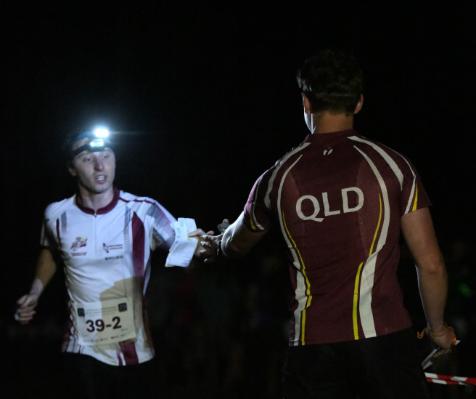
at #11 but came back strongly; Zara Toes (NZ) led for much of the second half but couldn’t quite hold on, with Enderby scoring from Key by 3 s.
The junior men ended up as a fairly straightforward race (won in exactly the same time as the seniors, on the same course). In the end Cooper Horley (NSW) and Elye Dent (ACT) were well ahead of the rest of the field, although Owen Radajewski (ACT) was very much in the mix until a major error on #14. Horley edged away over the second half to finish 27 s ahead.
The New Zealanders are always a significant presence in the junior classes and this was no exception. They took first and second in M16 with Zack Meads 11 s ahead of Tahi Harris, and filled nine of the first ten places in W16, but not the one that mattered; Victorian Keely Williams had her first major event win, holding off a fast-finishing Sophie Herde by 8 s. Not for the last time in the week, Ella Clauson (Tas) put a big gap between herself and the W14 field, winning 14 of 18 splits for a margin of 1:26, while Rory Shedden (NSW) overtook Ruben Claessens (WA) in the final third of the M14 race.
W70 was the closest of the masters classes, although it did not look that way for the first half of the course as Gillian Ingham (NZ) built up a big lead. Successive errors at #9 and #10 dropped her to third, leaving Robin Uppill (SA) to finish 8 s ahead of Sue Key (Vic). Another class with a lot of fluctuations was M60, where there were five different leaders. Jon Glanville (ACT), Steve Oram (NZ) and Tony Woolford (NSW) all lost time in the second half of the course when in potential winning positions, leaving Michael Warlters (NSW) to take a first national title. Richard Morris (NSW) recovered from 30 s lost at #7 to overhaul older brother Eric (NSW) and take M55 by 15 s, while Tim Wright (NZ) took the win in M50 after Grant Bluett (NSW) ran off the map at #11, and there was a rare defeat for Alex Tarr
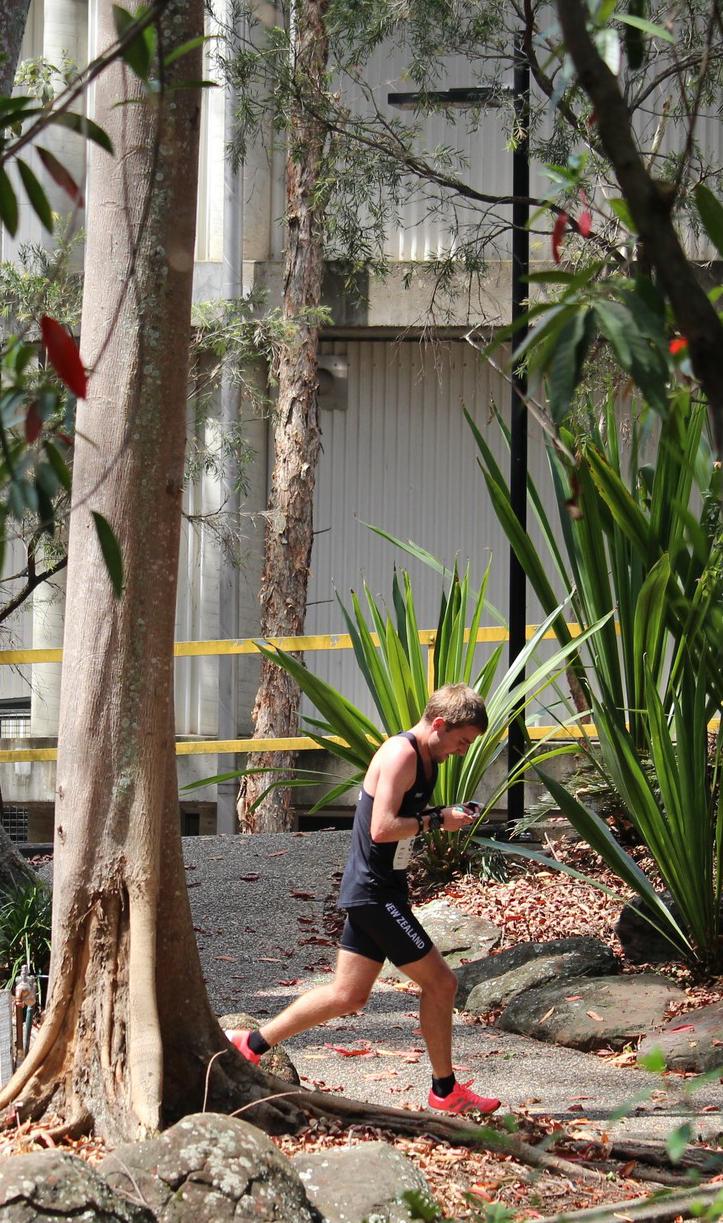

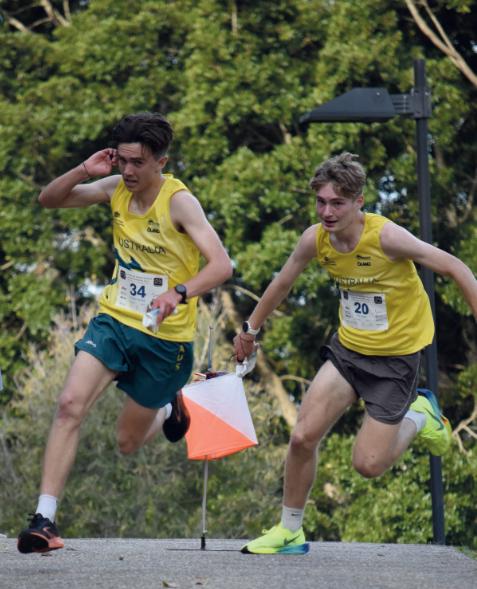


(Vic) in M80 after late time losses gave the lead to Ken Brownlie (WA).
Close races which were not as up and down included M40, where Ricky Thackray (WA) held a narrow lead over Tane Cambridge (NZ) almost all the way and won by 16 s, and M45, where Sten Claessens’ (WA) 11-s margin came by similar means against Angus Shedden (NSW). Anthea Feaver (WA) and Debbie Davey (NSW) were also close almost all the way in W65 before Feaver emerged at the second-last to finish 10 s ahead, while M70 was a similarly tight contest most of the way before Chris Norwood (Vic) pulled away from Malcolm Ingham (NZ) at the end. Shannon Jones (ACT) and Su Yan Tay (Qld) had convincing wins in W45 and W60 respectively, while Briohny Seaman (W40, NSW) and Libby Meeking (W75, Vic) had margins well beyond a minute, with Seaman having the day’s biggest margin.
The day finished with the short but lucrative Dash for Cash mass start race featuring the leading elite runners. Cooper Horley took the men’s prize in a close finish with Elye Dent, Grant Reinbott and Leith Soden, while Nea Shingler had the edge over Milla Key in the women’s race.
Australian Long O Championships, 28 September
The first forest event of the week took place at Wivenhoe Dam, northwest of Brisbane, in fairly steep gully spur terrain with bits and pieces of rock, and some burnt areas from a recent fire. It would have been a tough physical test even in cool conditions, and was a tougher one given that it was the first encounter of visiting competitors with significant Queensland spring heat. It was certainly a long day for the elite women, with only one competitor breaking 2 h. Emily Sorensen has emerged this year as a serious challenger to Grace Crane’s role as the leading Australian in the long distance, and with Crane absent from the carnival she was a clear winner here, establishing a lead by #3






and holding it all the way. Kaia Jorgensen (NZ) and Justine Hobson (ACT) hung in for a while and the gap stayed at 3-4 min through the middle stages, but the margin grew at the end and was over 7 min at the finish. Aislinn Prendergast (Vic), another who is no stranger to tough long races, was well down after the first few controls but finished strongly to overtake Hobson for third.
M21E also went to the runner who was strongest at the end. This was Pat Jaffe, who had a lead most of the way but was still only 59 s ahead at two-third distance, before pulling away over the final stages to a 4-min win. On a hot day, carrying water did him no harm. Alastair George and Sam Woolford (Tas) were best of the rest, with a couple of small mistakes halting Ryan Gray’s (Qld) late charge, and Leith Soden never really in the race on a rare (in 2025) down day.
A very spread-out W20E race had familiar names at the top. As expected, it was a duel between Nea Shingler and Milla Key, with the Victorian getting to the front in mid-course before losing the lead again when she dropped 3 min, the eventual margin, on the long #14. Erika Enderby never looked like missing third.
The closest of the elite races was M20E, with Jake McLellan (NZ) and Euan Best (Tas) at the forefront. The New Zealander was on top for most of it, losing the lead briefly to Cooper Horley (who fell out of contention with a mistake at #12) at #8 and Euan Best at #10, but Best got to the front over the last few controls. He was still 3 s ahead with three controls to go but lost time on #21 to leave McLellan in front at the end. Owen Radajewski ran the fastest second half of anyone, lifting him from sixth at #11 to third at the finish.
The younger junior classes had their share of interesting races with four decided by less than a minute. Perhaps the most interesting was M14. The New Zealanders Tristan Jayasuriya

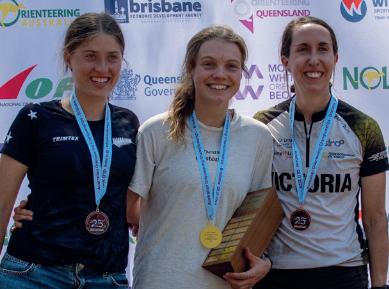






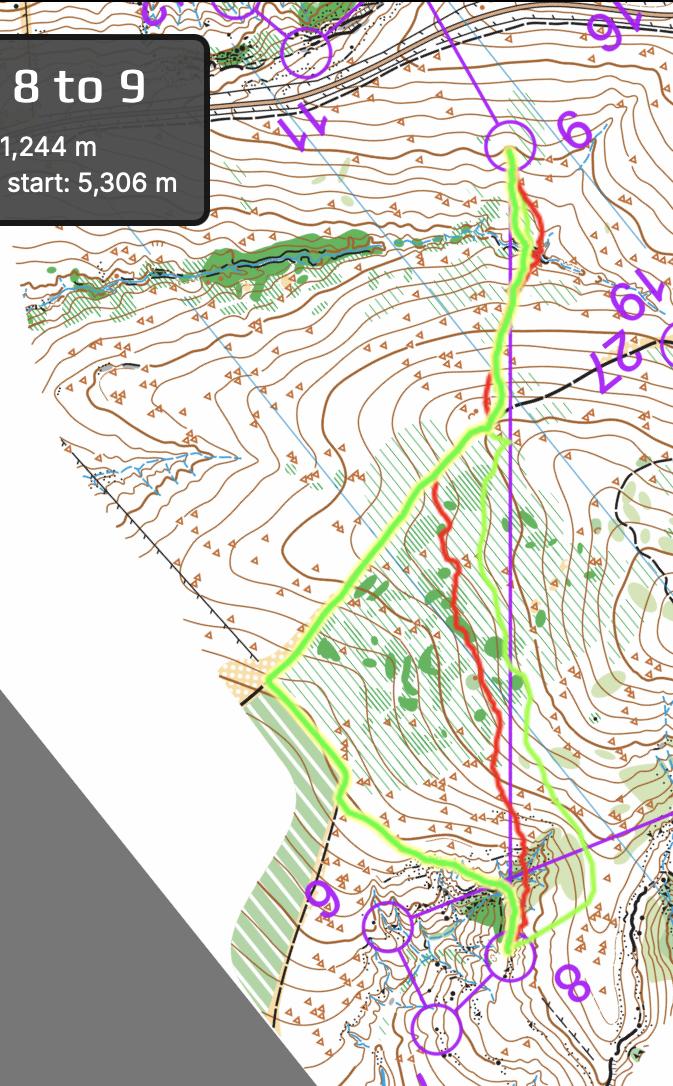
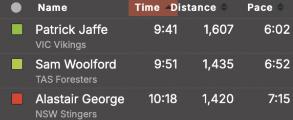

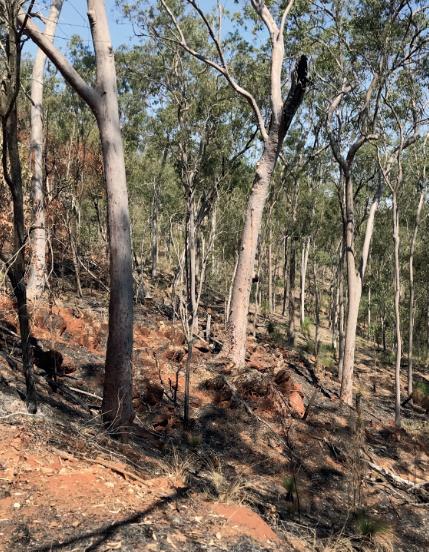

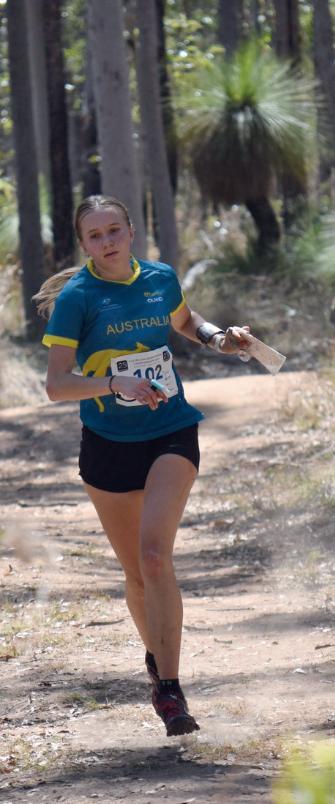

and Jacob Williams led at times in mid-race but neither made the top 10, Euan Shedden (NSW) was 12th at #7 but came through in the second half to get second, but it was Euan Farquharson (SA), in tenth two-thirds of the way through, who surged at the finish to win by 11 s. (Training in extra clothes to simulate the Queensland heat may have been a good strategy). W14 didn’t have fluctuations as big as that but still had a late change; with Ella Clauson out of the picture for the only time in the week, Ivy Rapley (Tas) overtook Naomi Penton (NSW) at the third-last. Hayden Dent (ACT) held on in M16 despite Matthew Layton (Vic) taking 1 min out of the field on the long #10, while Jemima Hoskin led four New Zealanders in the top five in W16. Another close race was W55, where the top three were separated by 26 s. Jenni Adams (NZ), Cathy McComb (Tas) and Linda Sesta (NSW) were never more than 1:30 apart; for the first half it looked like they were racing for second through fourth as Jennifer Enderby (NSW) took a 3-min lead, but she dropped out of the placings after losing 6 min at #10. Adams took a narrow lead at the fourth-last and held it to the end. Carol Brownlie (WA) won W70 by 35 s, holding off Gillian Ingham who just failed to recover from falling 7 min behind by #2. M60 and W60 both saw mid-race leaders striking trouble later. Paula Shingler (NSW) made the early pace in W60 but dropped away from #7 to #9, leaving the way open for a consistent run by Sue Hancock (Tas). (None of the top four, Hancock, Su Yan Tay, Gayle Quantock and Chris Brown, won a split). Michael
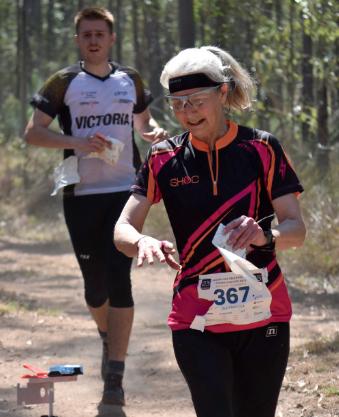



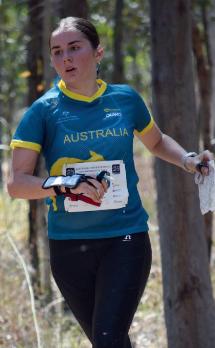



Warlters looked like he was going to make it two wins for the weekend most of the way but dropped to fifth with time lost on #10 and #11, leaving Tim McIntyre (Qld) as the winner; it might have been a different story had Tony Woolford not lost 13 min at the first control, as he only finished 3 min behind at the end. Martin Dent (ACT) in M45 was another early leader who came unstuck on a late control (the fourth-last in his case) but he still had just enough in hand to hold off Rob Walter (ACT) and Rob Preston (Vic), while Libby Meeking (Vic) won comfortably in the end in W75 but didn’t take the lead for the first time until the final 10 min, and W65 also saw a late blowout in the margin as Anthea Feaver took her second win of the weekend.
Grant Bluett completely dominated a deep M50 field, winning every split until the last three short legs and finishing with a winning margin in double digits. As expected, Natasha Key (Vic) was too good for the W50 field although Meredith Gray (Qld) hung in there for half the course, while others to have easy wins included Jon McComb (Tas) in M55 and, perhaps more surprisingly, James Lithgow (NSW) in M70. The W45 field was too deep for big margins but Shannon Jones was still comfortably on top through the second half, in a race where the ACT filled the top four placings. This might have been considered a throwback to the ACT’s performances at the 1991 Australian Schools at the same venue, except that all four were variously running for other states or countries at the time or too young to be in the team. The two 1991 winners who did feature here were Andy Hogg,
M50, and Rob


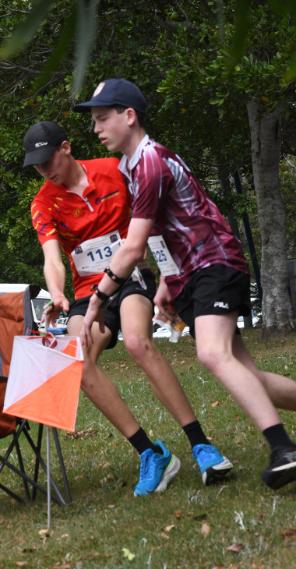

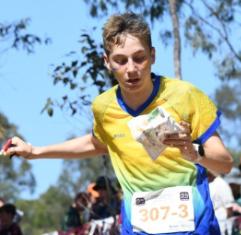





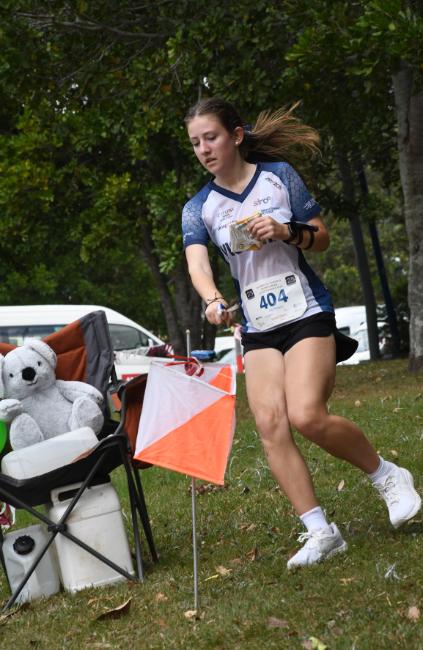
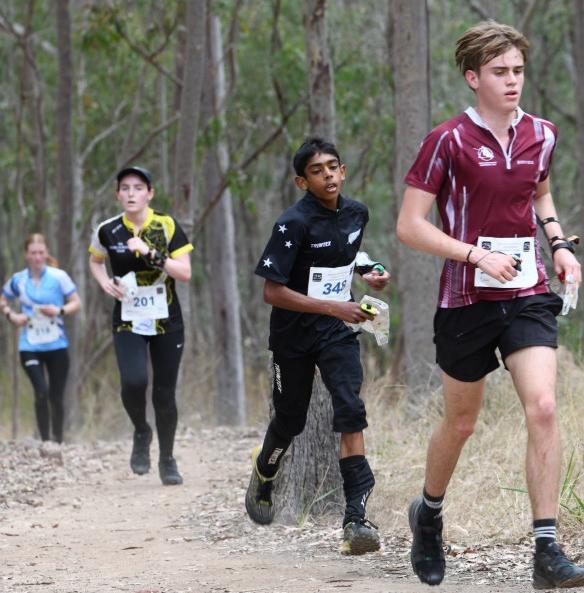

Australian Schools Championships, 30 September – 2 October




ASOC 2025 Sprint map fragment.
Mappers: Mark Roberts & Dylan Bryant
Planner: Dylan Bryant
It was a triumphant Australian Schools O Championships for the ACT. After four wins in a row for New South Wales, the ACT were dominant from the first day in the state competition, and also became the first Australian team to get their name on the Southern Cross Junior Challenge trophy in its 22 years of existence when they shared the title with Harua. While relay mispunches in the junior boys by both New Zealand teams opened the door for the ACT, few other state teams in the past would have been close enough to take advantage. Their depth was crucial; every one of their four teams placed at least fourth overall, and third state, in all three events. The event started with what proved to be a highly technical sprint at Forest Lake. Not surprisingly, it was a big day for the Dent brothers. Last year Elye competed in the sprint as an independent student and didn’t contest the forest events at all; in the meantime, he has stepped up to be a significant part of the JWOC team, and here was in a close race with the other Australian JWOC team member in the field, Euan Best. After losing time early he was in front by #10 and looked to be headed for a win by 15-20 s, but Best threw everything at the last few controls and finished only 3 s short. Hayden had an easier time of it, winning the first six splits to open up a 30-s lead on the field and being untroubled thereafter. Rory Shedden was best of the rest, while Ruben Claessens and Rohan Braid gave Western Australia two in the top four.


Ella Clauson had dominated the W14 sprint on the opening day of the carnival and was even more dominant here. She had opened up a lead of over 2 min by #12, and while some wobbles late brought the margin down to 1:17, it was still a commanding victory in such a short race. New Zealanders filled the next three places with Victoria Underwood the best of them. In the senior girls it was a race in two between Liana Stubbs (Tas) and Zara Toes, with no-one else within a minute of the pair. They were close for the first half before Stubbs pulled away for a 28-s win, with Savanna Sweeney (NSW) emerging from a tight bunch to take third.
The long distance took place at Old Hidden Vale west of Ipswich, last exposed to a national audience before any of this year’s participants were born (although it doesn’t have as many grass seeds in spring as it does at Easter). The warm conditions and hills made it reasonably physical. Both junior winners backed up from the sprint to make it a double. For Ella Clauson it was a repeat performance, opening up a big lead quickly (3 min by #4) and extending it to over 5 min at the finish. More surprising was what happened behind, with Layla Dent (ACT), still a W12, prevailing in a close three-way contest with Jemima Hoskin and Ivy Hoskin (NZ). Hayden Dent, who had got an unexpected second as an M12 himself back in 2022, had a few anxious moments but still had more than 2 min in hand at the end, with Xavier White (NZ) overhauling Rory Shedden late for second.

It was a different story for the seniors, with both sprint winners missing the medals and both sprint runners-up going one better the next day. Euan Best had a close head-to-head battle with Jake McLellan; the New Zealander led through the first half but never by much, Best was in front by #10, then briefly lost the lead and then regained it as they traded 30-s misses on the final loop. Zara Toes had an easier time of it, helped by putting a minute into the field on the long #7, and in the end was far enough in front that being caught 4 min by the final loop was not enough to stop Anna Batcheler (NZ) finishing second. Katherine Maundrell was best of the Australians in third.
The ASOC week concluded with the relays, on an area east of Ipswich with some interesting erosion, on a hot morning. Schools relay day rarely comes without some drama and 2025 was no exception; while the 11-point lead the ACT took into the day meant they would probably be OK as long as they avoided disaster, there were still plenty of other issues to resolve. Often relays are close after the first leg but this one opened up early. In the senior boys, Matty Maundrell (ACT) and Lachlan Braid (WA) were 4 min clear of the field at the first change, and Rohan Braid gave the Western Australians a 5-min lead in the junior boys. They extended their lead further through Archie Brownlie and were 8 min ahead of any other official team at the final change, but with Rory Shedden and Hayden Dent running the final leg for NSW and ACT respectively, it was always on the cards that there would be changes on the last leg. Shedden duly took his team through to the win, while Dent lifted the ACT from seventh to second on a day when four of the nine official teams mispunched. In the seniors a turnaround happened on the second leg when Zack Meads took Harua from 4 min down to 2 min in front, but Elye Dent regathered Tahi Harris on the last leg and pulled away to give ACT the win by 45 s. Mispunches were a factor here as well, with both Karahiwi and South Australia exiting the race while in competitive positions. Both girls’ relays were close for two legs before ultimately comfortable wins. Ivy Rapley gave the Tasmanian juniors a useful lead on the first leg, but Christina Symons pulled Karahiwi near level at the final change. Ella Clauson and Sophie Herde went out together but what looked a contest became a nocontest, with the final Tasmanian margin extending beyond 7 min. Tasmania were also a significant factor in the senior relay, with Liana Stubbs finishing the first leg together with the two New Zealanders Niamh Hoare and Greta Prince, and Katie Clauson (Tas) opening up a 2-min lead on the second leg, but defending that against Zara Toes was always going to be a big ask for Sophie Hartmann, and in the end Harua won
comfortably. After being 10 min down after the first leg, Mira Walter and Ella Hogg brought the ACT back into the race and they ended up edging out Karahiwi for third by just 11 s, a result critical to their Southern Cross triumph.
Australian Relays, 4 October
The Australian Relays returned us to the Wivenhoe area, and something different – for the first time, the elite classes were run as a twilight event, with the first leg in daylight (more or less) and the last two at night. The area was flatter than the long and would have been fast even without the August fire that removed most of the grass; with that, it was lightning, with the fastest first-leg M21s not much over 4 min/km and even the M45s breaking 5 min/km.
As expected, there wasn’t much to separate teams on the first leg in many classes. In M21, Grant Reinbott, who broke the halfhour for a 7.1 km course, led four within a minute for Queensland. Marius Kaiser took over for Queensland and opened up a useful break over Toby Wilson for NSW, sending Ryan Gray out with a 2:29 lead. Alastair George caught him early in the course and from there it was a head-to-head duel, but Gray was just able to get the honours in the finish.
For two legs W21 was a duel between the ACT and New Zealand. Justine Hobson and Natalie Miller eked out a narrow lead over Renee Beveridge and Lara Molloy, but Kaia Jorgensen was always likely to be too good on the final leg and took the New Zealanders to a comfortable win. The Victoria-SA battle for third, important in the context of the National League, started with Natasha Key and Zoe Carter competitive with the first-leg leaders. Both teams dropped back on the second leg, and Milla Key went out with a big lead over Emily Sorensen; she lost most of that with an early error, but steadied to hold off the South Australians.
M20 started with Euan Best giving Tasmania a 2-min lead after the first leg and they were never headed from there, with Jett McComb steady and Albin Sundstrom finishing off with a 3-min margin. The key battle behind them was for second, third and fourth among NSW, ACT and Queensland. NSW were 3 min back after two legs, but Cooper Horley ran down Owen Radajewski and Hugo Taunton-Burnet (Qld), and then prevailed in a sprint finish.
W20 took some time sorting itself out with seven teams, led by Katherine Maundrell (ACT) and Amy Nicoll (NZ), within 3:13, but as long as NSW were competitive on the first leg they were always likely to take command from there, and so it proved. Erika Enderby gave them a 5-min lead by the end of the second
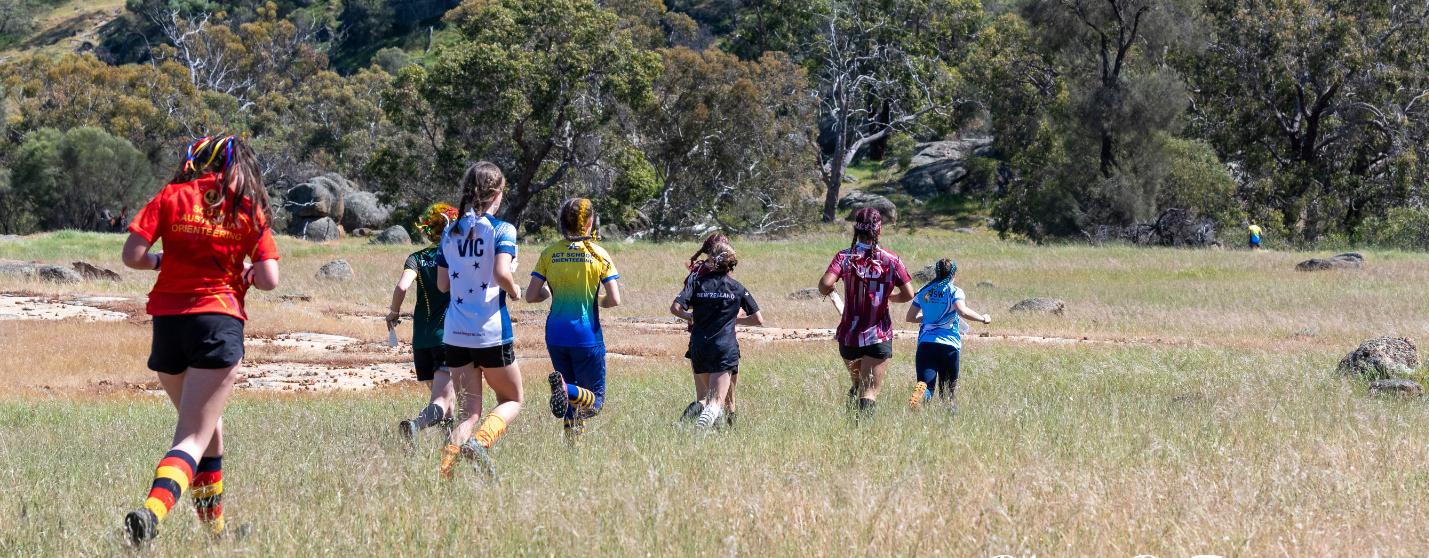
Senior girls: Liana Stubbs (Tas), Katie Clauson (Tas), Katherine Maundrell (ACT), Ella Hogg (ACT).
Senior boys: Euan Best (Tas), Elye Dent (ACT), Matty Maundrell (ACT), Austin Clem (SA).
Junior girls: Ella Clauson (Tas), Ivy Rapley (Tas), Layla Dent (ACT), Ella Maja Lang (Vic).
Junior boys: Hayden Dent (ACT), Rory Shedden (NSW), Rohan Braid (WA), Mica Walter (ACT).



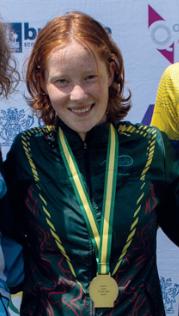

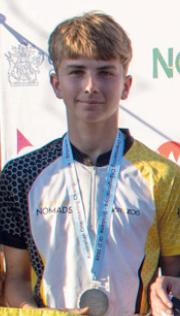




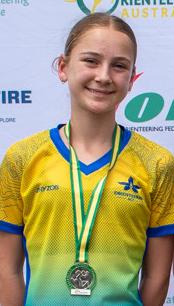

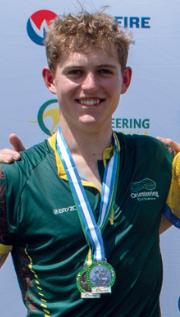


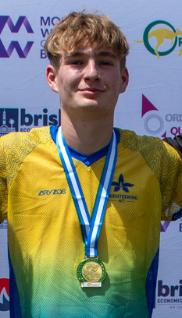
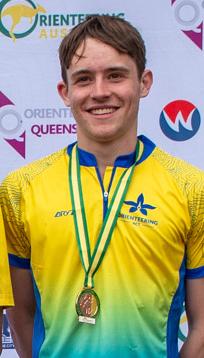







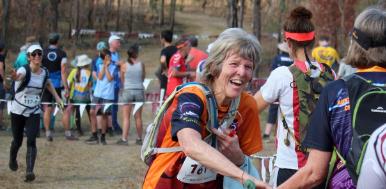



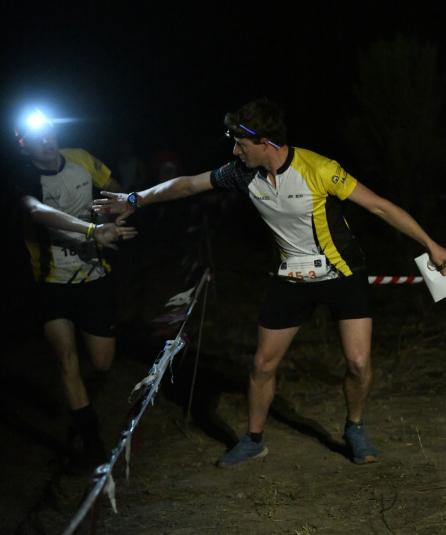



leg and Nea Shingler went on with it from there. The ACT were the best of the rest, followed by New Zealand.
The other classes took place in daylight. There was some good racing to be had, with only two classes, W45 and W55, decided by more than 10 min, and eight changing lead on the last leg, although M21 was the only genuine sprint finish for the win.
(Given that ACT filled the first four places in W45 in both individual forest events, it wasn’t surprising they dominated the relay). Even the normally thin M/W35 classes were both decided by less than a minute, with ACT just holding off in W35 as Gayle Quantock brought NSW back from a 12-min deficit, and Queensland holding off a comeback almost as big from ACT in M35.
NSW made up 5-min deficits on the last leg in both M45 and M55. In M45, Victoria led after the first leg and Queensland the second, but both had front-loaded their teams and Angus Shedden ran through the field, as did Craig Dufty for WA in second; earlier, the ACT had mispunched on leg 2 when in a competitive position. In M55 NSW made a slow start and were 10 min down in seventh after the first leg but Scott Simson narrowed that gap before Richard Morris eliminated it, while New Zealand dropped from the lead to out of the placings. Carolyn Jackson also came from well back to give Victoria W65, with Robyn Pallas (NSW) and Carol Brownlie (WA) separated by only 5 s for second.
New Zealand’s junior depth saw them take M16 and W16; in both classes, state teams were competitive but were unable to finish it off, although the strong WA M16 team made some amends for their ASOC disappointments by being lead state. Tasmania came from behind on the last leg in both M14 and W14, Ella Clauson continuing her good week, and Henry Jordan overhauling the ACT.
The week finished with the Australian Middle Distance Orienteering Championships at White Rock, a sandstone area on Brisbane’s suburban fringe. It was probably the most technical area of the week although those at the front mostly managed to have clean runs.
One of the positive aspects of the 2025 season has been the emergence of a younger group at the front end of the women’s
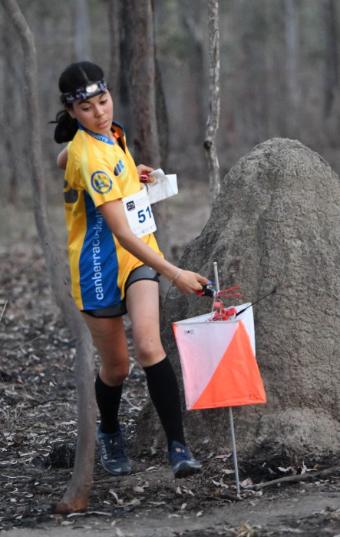


field. It was especially pronounced here as two juniors filled the top W21E places, a regular occurrence in sprint events of late but rarer in the forest. Nea Shingler had the lead from the start, and although Milla Key came back at her a bit after a slow start, she could not get closer than a minute. Kaia Jorgensen completed the placings on a day when the top three were cleaner than the rest.
Queensland’s new Swiss import Marius Kaiser had had a good relay, and he had a better middle distance, taking the lead by #5 and being in control thereafter to finish 2 min clear of the field. There was a close race between Alastair George and Leith Soden (SA) for the resident title, with the South Australian getting in front over the last few controls to complete an excellent year with his first senior championship.
One of the best races of the day was in M20E, a fluctuating race which had five different leaders over the course. Euan Best held a narrow lead for much of the course but dropped 2 min at #14, handing Elye Dent a lead which he promptly lost at the next control. Cooper Horley, coming off an impressive relay run, took the lead for the first time at #15, and although he never got the margin beyond 15 s it was enough to hold off Owen Radajewski, with Best, Jamie Woolford NSW) and Albin Sundstrom all within 2 min of the lead. At the other end of the margin scale, with her normal rivals running seniors Erika Enderby was untroubled in taking W20E by over 5 min, with Liana Stubbs overhauling Niamh Hoare for second after a slow start.
Shannon Jones (W45) and Tim Hatley (M65, Vic) both completed a clean sweep of individual titles. Both had to work for it. Jones trailed Rebecca Minty (ACT), making a welcome return to national competition, for most of the course and was 36 s behind with four controls to go, but was able to come through for the win in what became another ACT sweep. Hatley kept his nose in front of a close bunch on a day when eight finished within 3:08 of the lead; the only one who was fast enough to challenge him was Sebastian Burgess (Tas), but a mistake on #5 dropped him to fifth. The only other sweep was from Eric Smyth (Qld) in M35.
Close finishes were the order of the day amongst the younger juniors with W16, M14, M12 and W12 all decided by less than a



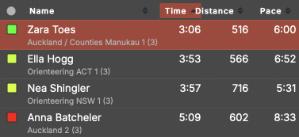
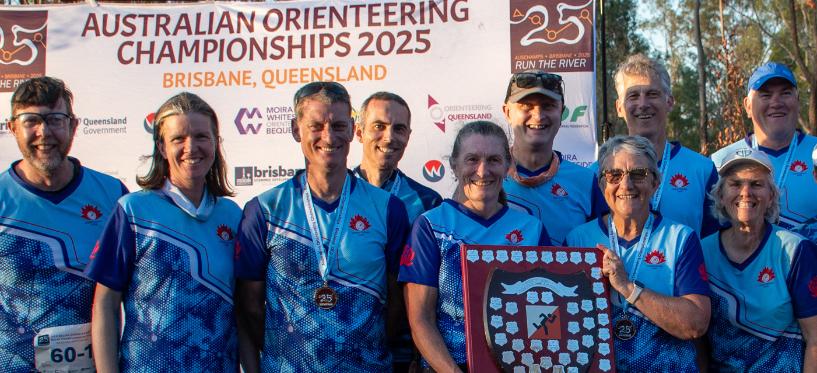
minute. New Zealanders again took the two top places with Greta Prince (W16) just ahead of Jemima Hoskin, and also took out M14 with Alfie Cochrane 40 s ahead of Angus Hewitt (Tas). Two of the week’s dominant figures had an easier time of it, Hayden Dent winning the first six splits on the way to a comfortable margin in M16, and Ella Clauson equally convincing against her fellow Tasmanian Ivy Rapley in W14. Close finishes were a bit harder to find in the older classes, but one which did happen was M75. Neither Paul Hoopmann (SA) nor Bill Jones (ACT) were in the top five at halfway, at which point Rob Rapkins (Qld) had the lead, but they were the fastest over the second half with Hoopmann 49 s ahead. Jon McComb’s M55 win over Alistair Cory-Wright (NZ) was also by just under a minute, with additional interest coming from Richard Morris overtaking older brother Eric for third over the last few controls.

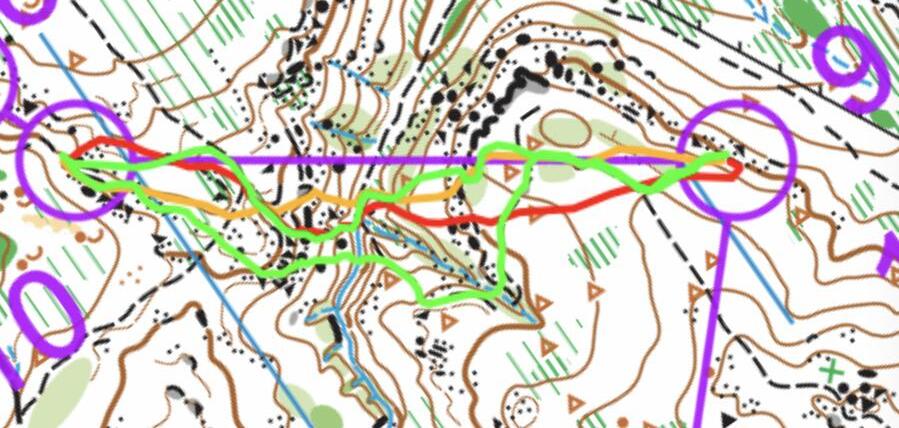

Grant Bluett was almost as dominant in M50 in the middle as he had been in the long (although he did drop a few splits this time). There was a return to normal service in W55 and W70 as Jennifer Enderby and Gillian Ingham bounced back from disappointments the previous weekend; Enderby was nearly 5 min clear, while Ingham led all the way, although Louise Fairfax (Tas) got to within 2 s at #7. James Lithgow made it a double in M70 although this time Malcolm Ingham gave him a run for his money, while Tim McIntyre in M60 also added a middle championship to his long, taking the lead after Steve Cooper (SA) mispunched when in front.
It will not be as long a wait for the next championships as it usually is; next year, with its rearranged schedule, the Australian Orienteering Championships are in Tasmania at Easter (with the Oceania Sprint Orienteering Championships in NSW also occurring in the interim).
Albin Sundstrom TAS 13:34 W21E AOC Long 11.1 km
Emily Sorensen SA 1:55:25
Kaia Joergensen




Sprint relay
The 2025 European Orienteering Championships opened with lots of drama in the Belgian city of Hasselt, when Norway claimed their first ever championships sprint relay title. Finland’s anchor ran first into the finish, but what should have been Finland’s moment of glory transformed into Norwegian celebration when Maija Sianoja’s bypassed-penultimate control cost her team the victory. (…) Finland weren’t the only ones with problems, 14 out of 27 teams were disqualified, many for missing the same control that cost Finland their victory (control 18).
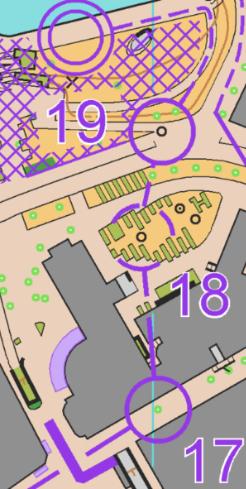
In the men’s [knock-out] final, world sprint champion Martin Regborn led for much of the race, but the decisive moment came on the route choice to the penultimate control. August Mollén chose the southern route while most of the field went elsewhere. (…) Mollén’s route choice proved fastest, giving him the lead he held to the finish. Jonatan Gustafsson secured silver ahead of Finland’s Akseli Ruohola in a close sprint for second place. The women’s race remained together until the final loop, where France’s Cécile Calandry made better route choices to both the ninth and final controls to take the lead
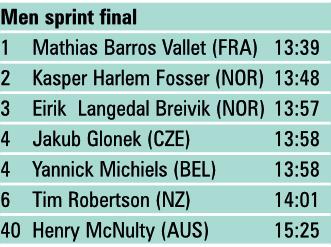
from Switzerland’s Simona Aebersold. Calandry’s victory marked France’s first women’s gold at an international championships. (…) Finland’s Elli Punto finished a strong fourth, just 3 s from a medal in her first major championship final. The junior runner made history as the highest-placed Finnish woman in knock-out sprint at championship level.
Individual Sprint
France’s Mathias Barros Vallet produced the performance of his career to win his first major international title, defeating Norway’s strong sprint duo of Kasper Harlem Fosser (silver) and Eirik Langedal Breivik (bronze). Vallet was 3 s behind Fosser at the arena passage but produced a fantastic final loop, gaining 15 s on the Norwegian at control 14 to secure a 9-s victory. The result was a massive breakthrough for the Frenchman, whose previous best international result was tenth at a World Cup sprint.
In the women’s class, Norway’s Pia Young Vik, 22, claimed her first major individual title by just 3 s over Sweden’s Hanna Lundberg in one of the closest sprint finals in recent memory. Finland’s Inka Nurminen took bronze, also winning her first individual international championship medal. The race was decided in the final stages, with Young Vik making up ground after being fourth at the arena passage. ‘I ran almost completely without mistakes. There’s only one place where I went up some stairs too late, where I lost a couple of seconds’, Young Vik told the Norwegian Orienteering Federation. ‘But I didn’t think I would be able to win’.
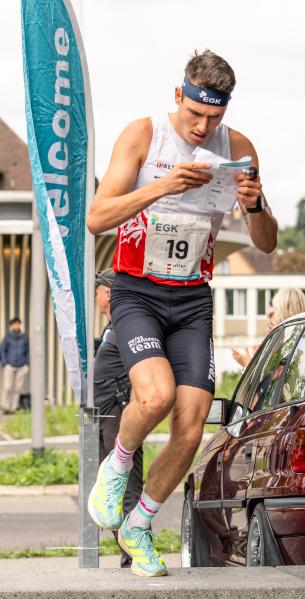

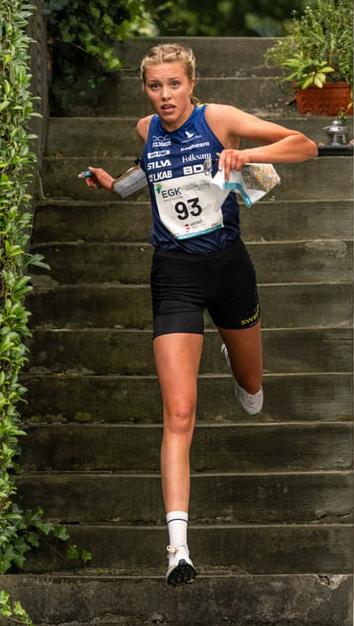



Tomáš Křivda delivered a near-flawless performance to claim his first ever World Cup victory, holding off home favorite Matthias Kyburz by just 4 s. The splits analysis reveals that Křivda maintained an excellent consistency throughout the course, avoiding any significant time losses, and executing his route choices well. Kyburz, competing in his final elite


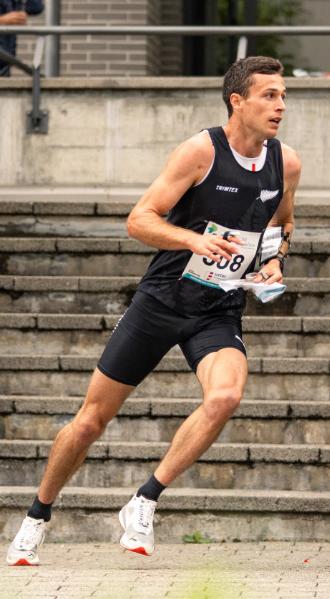

orienteering season before transitioning to marathon running, set an impressive early pace despite limited recent sprint racing. The decisive moments came in the technical middle section of the course, where Křivda’s execution proved superior to his rivals. Yannick Michiels (BEL) rounded out the podium in third 9 s behind the winner, while Tuomas Heikkilä (FIN) produced a strong finish to claim fourth place after recovering from early time losses.
Simona Aebersold’s dominance was evident from the second control onwards, as she raced away from the field and led throughout. Her 30-s margin of victory over Natalia Gemperle was the largest winning margin of the weekend, showing Aebersold’s superior form on home terrain. The battle for second place was far closer, with Gemperle, European Champion Pia Young Vik (NOR), and Hanna Lundberg (SWE) separated by just seconds throughout much of the course. Gemperle’s strong finish secured second place, while Young Vik finished 4 s back in third.





In the men’s final, the leg to the second-last control proved decisive, where Tino Polsini (SUI) and Max Peter Bejmer took the fastest route. This critical decision brought them from the back-half of the field to first and second place at the finish.
In the women’s final, Aebersold showed excellent route selection to the second-last control, choosing the fastest option, while Hanna Lundberg took a longer alternative that cost valuable seconds. Grace Molloy (GBR) delivered a strong performance to claim second place.
Max Peter Bejmer (SWE) secured the overall World Cup 2025 victory among the men after a second place in the knock-out sprint. Simona Aebersold was already the winner of the overall World Cup 2025 in the women’s class after Friday’s individual sprint.


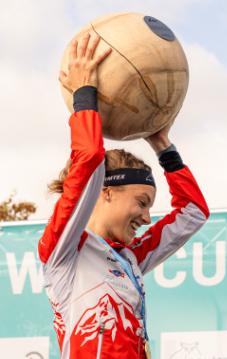

The sprint relay provided one of the weekend’s most exciting conclusions. Aebersold made up a 31-s gap to the lead after taking over on the final leg, and fought a thrilling duel with Hanna Lundberg (SWE). The critical moment came on the leg to the third-to-last control, where slightly different route choices around a building complex may have determined the outcome. The two athletes arrived at the final control from different directions, with Aebersold marginally ahead, but Lundberg’s determined sprint on the short run-in to the finish secured victory for Sweden.
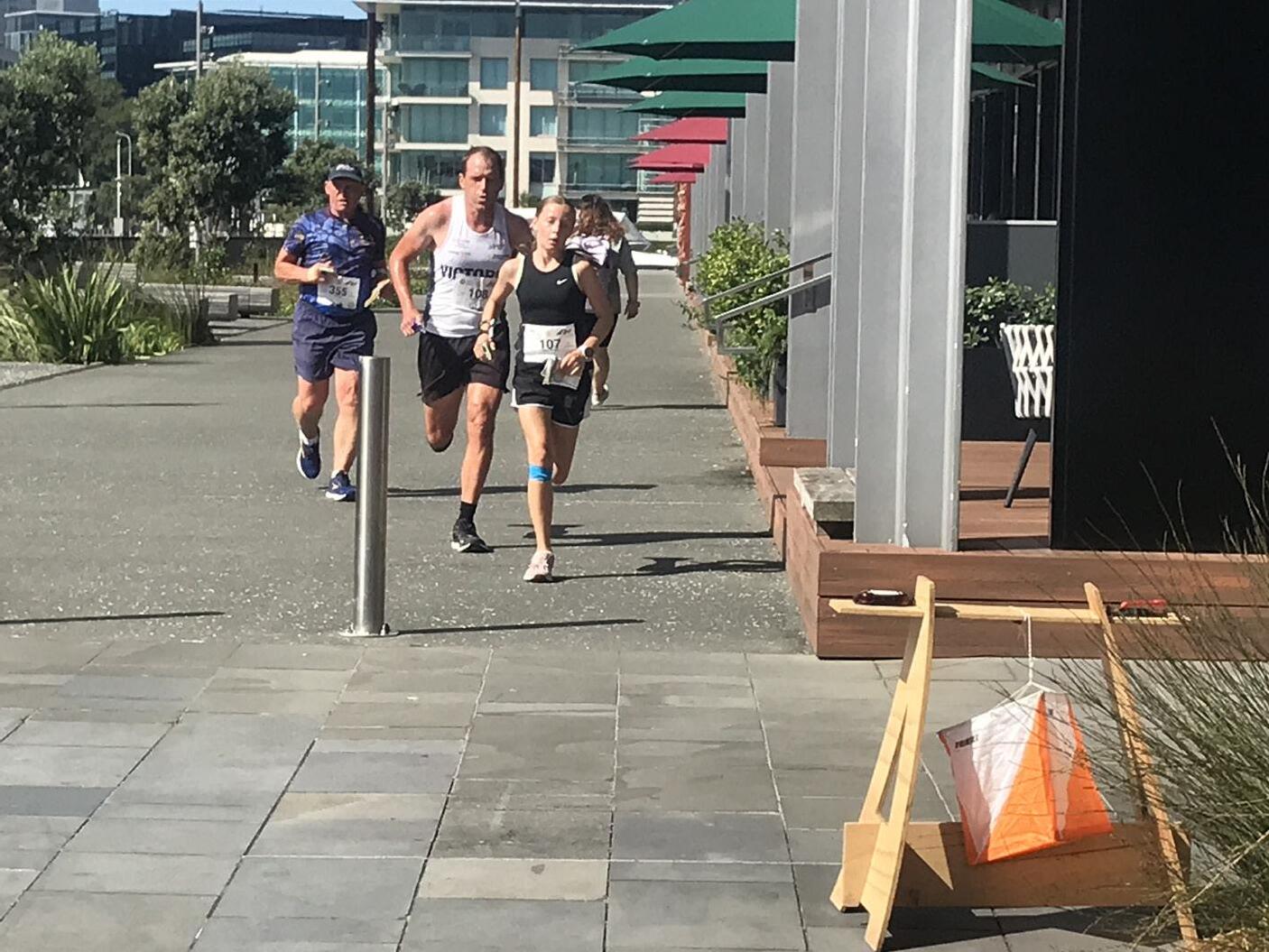




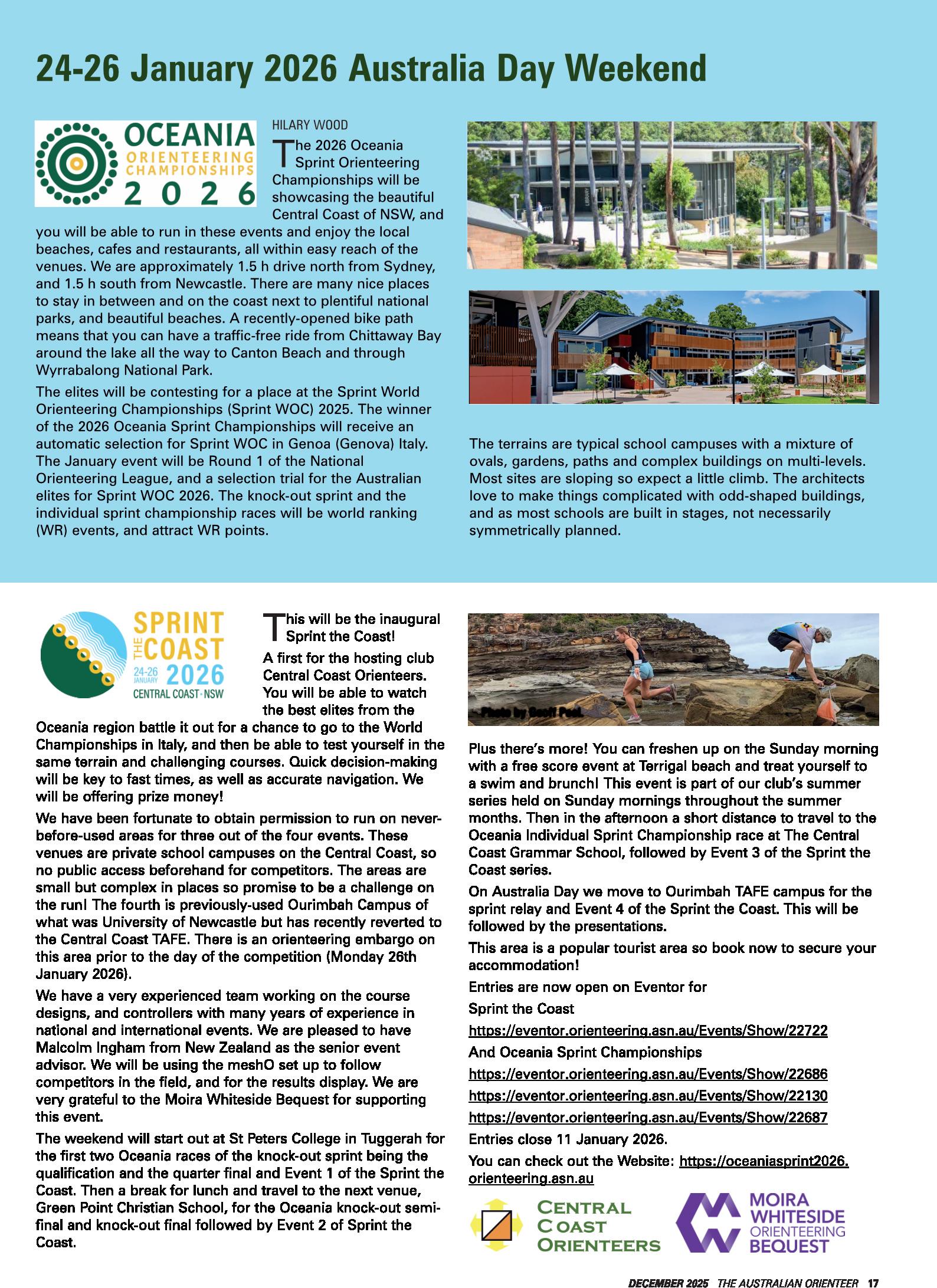
NATASHA THACKRAY
BY SASHA EVES
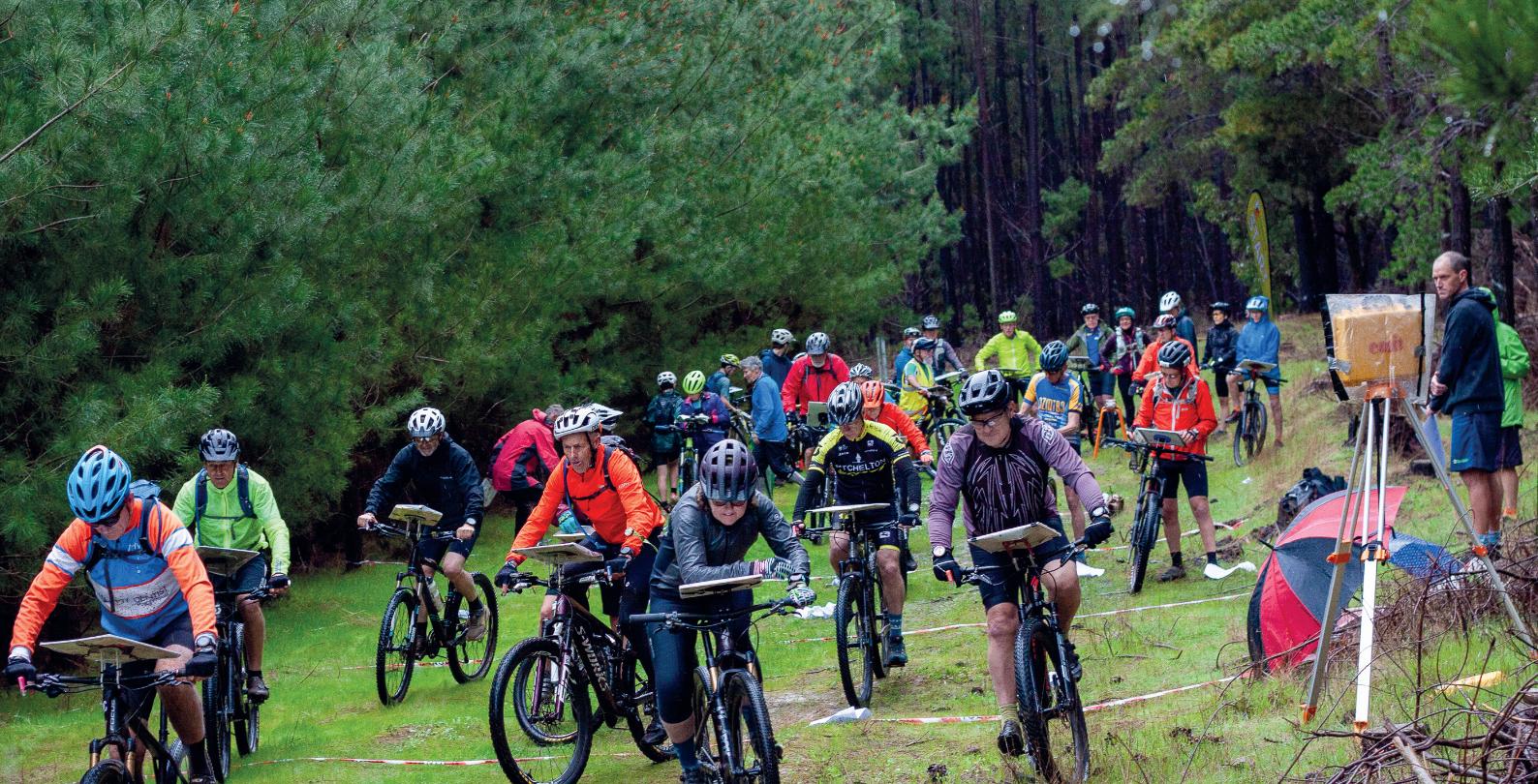

Want to see more? Scan the QR codes in this article to see videos on the MTBO Australia Facebook page.
If you weren’t in Collie for the 2025 Australian Mountain Bike Orienteering Championships, you missed out on an absolute cracker of a weekend. The FOMO is real. This was the kind of weekend that offered sunshine for the sun-seekers, sideways rain for the ducks, and everything in between… sometimes all in the same hour. This unusual weather pattern for Western Australia did have an upside as the moisture made our usually slippery-when-dry tracks surprisingly firm - a rare treat in WA. We had competitors travel for the MTBO Aus champs from all over WA including regional cities such as Albany, and interstate competitors from Victoria, NSW, ACT, Queensland, Tasmania and international travellers from New Zealand! A really diverse group of travellers coming to the most isolated city in the world.
There were four events held over three action-packed days, so riders were treated to world-class courses on world-class MTBO maps, proper weather events with a little bit of WA sunshine and just the right dose of chaos. There were heroics, snacks, mechanical miracles and even a duck called Conrad. The first event caused the setter (Ricky) more than a little anxiety. The previous day when he put out the controls it was perfectly sunny, with no puddles in sight. On event day, the heavens opened, and he was very worried about what changes, if any, the heavy rain would do to the rideability of the tracks. The championships kicked off with the mass start in the rain, and true to its name, it was a mass lineup of nervous laughter and flapping rain jackets. Riders lined up in the drizzle, tore their names off their maps and tried not to look horrified when they realised every course had different




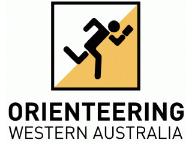







loops - no following allowed here! The courses used a combination of forking, phi (diamond) loops and butterfly loops to make it interesting for everyone racing, so there was a lot of mud-covered competitor discussion of courses and routes at the finish. There were muddy smiles at the finish, a few stories of ‘creative route choice’, and at least one rider who swore their map was printed with extra contours just for them. We can confirm it was not the case – the map was relatively hilly and there were some questionable route choices taken.
Saturday was a monster, with two race events back-to-back, followed by the presentations dinner. The weather was a little less heavy and in the afternoon we had some lovely sunshine more typical of WA. We had a morning middle distance, an afternoon sprint, and an evening presentations dinner which meant that competitors had to dig deep, both in energy and appetite and the carnival organisers and volunteers had to play a masterful game of event tetris-foxtrot to make the events run smoothly.





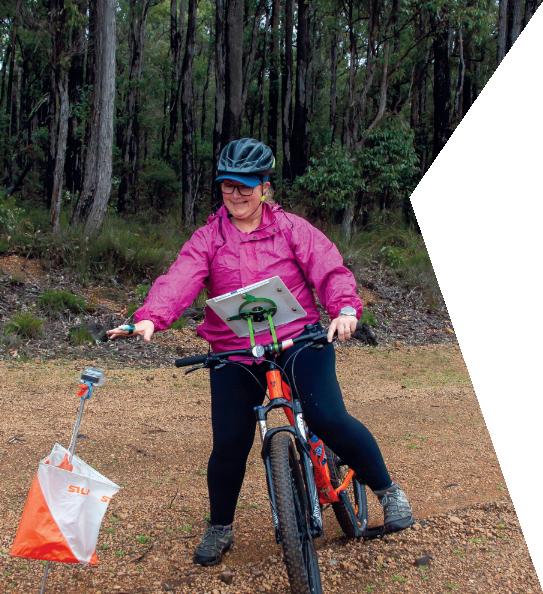








2025





The middle distance saw riders dart through Collie’s maze of fast, complex, and sandy singletrack winding through gorgeous conservation reserve forest - an area we were specially allowed to enter for the event. A standout feature across all courses was a dastardly long route-choice leg stretching from one side of the map to the other, which had even the most seasoned riders hesitating and scratching their heads.


The sprint brought a complete change of pace, with fast riding through the high school grounds, parkland, and bush along the Collie River. The compact MTB park, showgrounds, and trotting track added a twist of technical challenge and variety that meant no competitor could rest at any point during this race. The urban setting offered plenty of spectator entertainment, as riders made lightningfast decisions under pressure - especially in the complex showgrounds area, where finding the fastest route choice was as rewarding as it was difficult. Highlights of the day included junior rider Edmund’s lightning-quick sprint run, and Joel’s impromptu bikemechanic tutorial - fixing a broken chain just 40 min before his next race. By evening, everyone was ready for the presentations dinner, where muddy faces transformed into smiling and shiny-clean ones, stories grew taller, and laughter filled the room. There were medals awarded, chocolate prizes, tall tales and maybe even a quiet beverage or two.
Sunday’s long distance event was one for the record books with four seasons in one day. Riders set off in undulating native forest, under clear skies only to battle buffeting winds, sideways rain, and head back to sunshine again at the finish. Legendary competitor Heather Leslie, winner of W70, summed it up perfectly when she told us after her ride, ‘Bring snacks!’ She wasn’t wrong, the courses were big, bold, and beautiful, and finishing hungry was a very real risk. Heather’s advice: ‘Snacking on a gold medal won’t do your digestion any good.’ The long distance also gave us Ricky’s epic race analysis, which you can catch complete with commentary on route choice, swamps, and mechanical mishaps. It’s honest, hilarious, and pure MTBO gold.
If there was an award for ‘best host town’, Collie would win it in a sprint finish. Riders were treated to rugged terrain, vibrant forest tracks, and a town that truly embraced the event. Between the smell of eucalyptus, the sound of freehub wheels echoing through the trees, SI AIR beeps and the occasional splash through a puddle, it was a weekend to remember. Let’s not forget the unofficial mascot of the mass start — Conrad the Duck, who took a keen interest in the racing and seemed to have very strong opinions about who would win. Events like this don’t happen without an army of dedicated people behind the scenes. Huge thanks go to our course setters, organisers, timing and admin teams, the photographer and volunteers who kept everything running smoothly no matter what the weather threw at them.
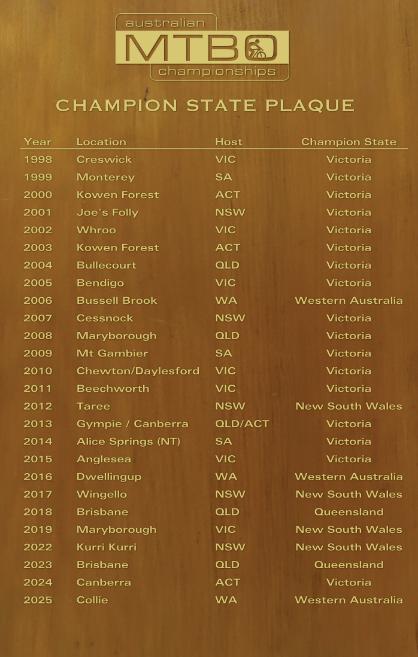
Event results and Livelox tracking are available through Eventor here
So what is next? If Collie was wild, we can’t wait to see what Victoria has in store for the next installment of the Australian MTBO Championships being held on 8-11 October 2026. The locations and courses will be different, but the spirit and the snack strategy will surely be the same.
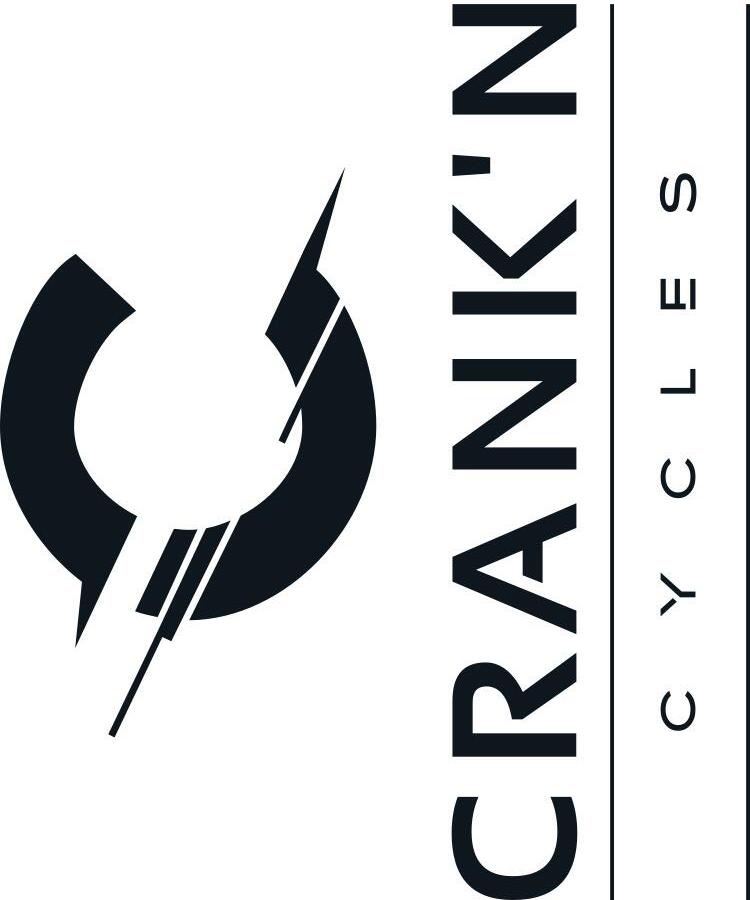
So start training, tune up those bikes and bring your sense of adventure and snacks. See you out there!
Ricky Thackray Sprint WA 26:24
Ricky Thackray Long WA 2:04:57

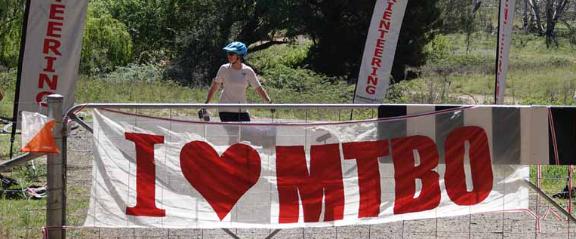

PHOTOS BY JOHN HARDING

Interview with event director, Marina
Iskhakova
Questioner: As Carolyn Jackson said this year, ‘October is a time of regular pilgrimage for all devoted MTBOers to Canberra!’ What was special or new this year that made people take on this pilgrimage?
Marina Iskhakova: Yes, this year was especially challenging for us. After last year’s successful AUS MTBO Carnival 2024, we realised that expectations would be high and many people would consider coming. However, we had a smaller team, limited financial resources, and less time. Still, we committed to maintaining high standards — and perhaps that commitment is what attracts people every year.
Q: What were the highlights of the championships this year?
Marina: This year we offered three championship events. The sprint was held in the excellent Jerrabomberra area — perfect for a sprint championship. It was flat but technically tricky, with almost no one managing to avoid mistakes at high speed amid constant changes of direction. Michael Reed, the sprint course setter, did an excellent job, and participants really enjoyed the courses!
Q: Could you comment on the middle and long championships?
Marina: The middle and long events were held on the newly updated East Kowen map, extensively revised by Hamish Mackie. It was our first return to East Kowen after major logging, and ACT now has two excellent maps revived thanks to Hamish. Ken Young was the course setter for the long championship, which turned out to be a true test of endurance, mental strength, and technical agility. Not everyone completed the course, but everyone enjoyed the experience. I was the course setter for the middle championship, with Fedor Iskhakov serving as course controller for both middle and long. The middle was a blend of diverse terrains, offering the joy of
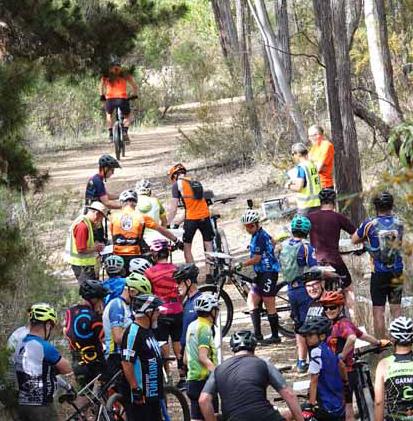
fantastic single tracks and a number of sections through moonlike logged areas. Many participants commented positively on the variety and excitement of the courses.
Q: Did you use meshO this year?
Marina: Yes, this year Fedor Iskhakov, together with Michael Reed and Tate Needham, continued testing and developing the meshO equipment and its capabilities. Each championship included several radio controls that transmitted live results to the computer system and display screens. With each event, meshO brings more safety, engagement, and excitement. We are very grateful to the tireless trailblazing meshO team! They bring a spirit of cool innovations and constant development and progress to the events!
Q: We know that the winners received exclusive ‘I Love MTBO’ water bottles. Could you name the champions who secured wins across all three events?
Marina: Yes, we were thrilled to see that eight out of 70 participants achieved outstanding performances, winning all three events — sprint, middle, and long. They are Nathan Cheung (M12), Veronika Iskhakova (W14), Isaac Adams (M14), Hamish Mackie (M50), Carolyn Matthews (W60), Heather Leslie (W70), Leigh Privett (M80), Jessica Law (Open 3).
Q: What’s next? What can riders expect from the 2026 MTBO season in the ACT?
Marina: Our next long-awaited MTBO event will be on December 17 at the breathtaking Arboretum! It took several years to secure a permit specifically for a MTBO event there — and we finally got it! Everyone is warmly invited to join us at the Arboretum for this first-ever iconic MTBO event with mindblowing views. As for 2026, we’re preparing something very special for the MTBO championships — but it’s still a secret for now! Full details will be announced soon, before Christmas!
Q: Thank you very much ACT MTBO Team!
Marina: We’ll be thrilled to see many of you at our MTBO events in the ACT in 2026!
The 2025 National MTBO Series is the premier national competition series for individual riders and state teams in mountain bike orienteering.
Riders earn individual points in age classes, and state teams accumulate points via their top performers. The following riders emerged as series champions in their respective age classes.


Mark your calendars for April 2026 and join us in Northern Tasmania for the Australian Orienteering Championships that will incorporate the Australian 3-Day Championships across the individual championship events. Whether you’re a seasoned competitor or new to the sport, this event promises a fantastic mix of terrain variety. New areas for the Sprint Distance and Middle Distance, spur gully and granite terrain for the Long Distance and something different for the Relay offering both technical variety and classic Tassie terrain.
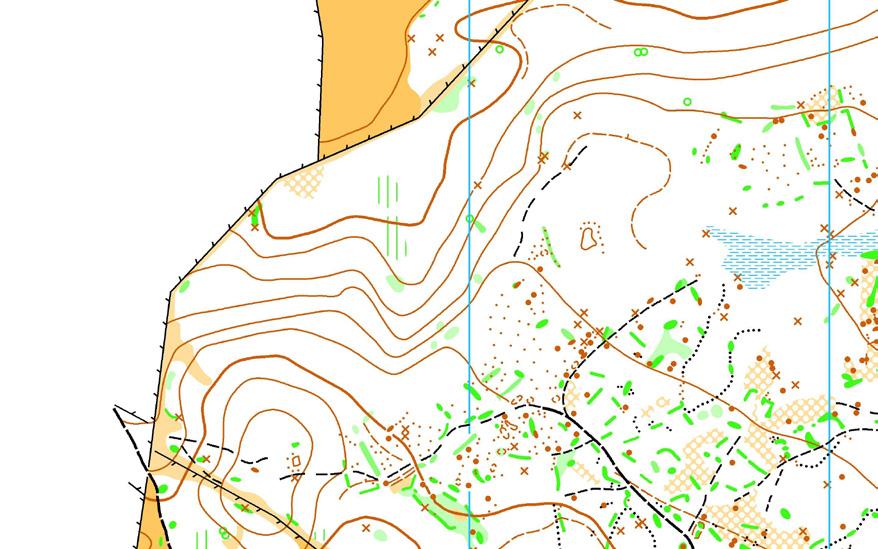
The championship isn’t just about the competition. There’ll be classes for all ages and skill levels; from juniors, families and masters to Australia’s elite orienteers. Enjoy local hospitality: discover great fresh produce, explore historic towns, and take in all the charm Tasmania has to offer. Accommodation options are varied in and around Launceston with easy access from major Australian cities. It’s the perfect autumn orienteering getaway.
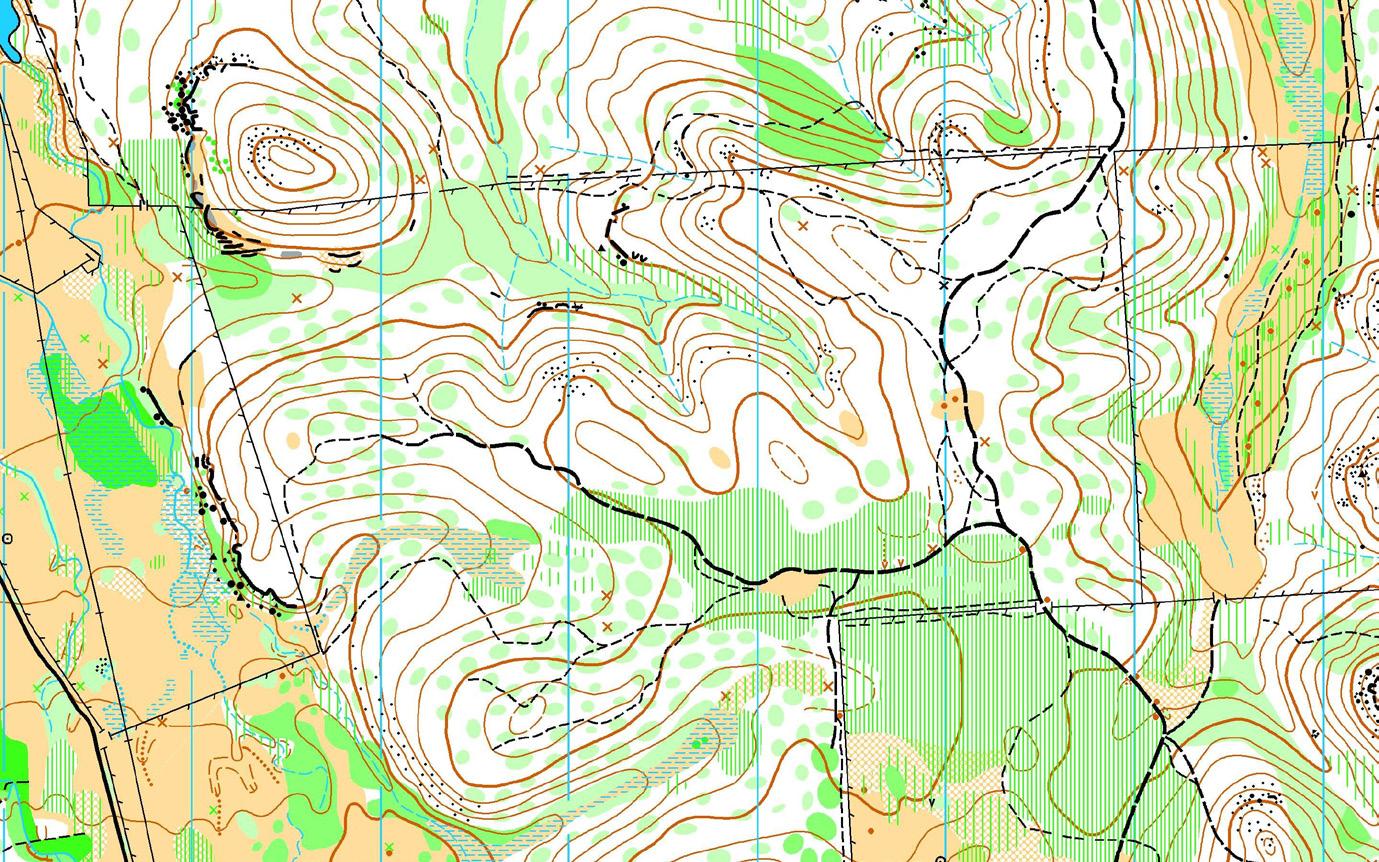
Enter now via Eventor and be part of an unforgettable orienteering experience in 2026. Stay on for a feast of orienteering around Hobart the week after. See you in Tassie!
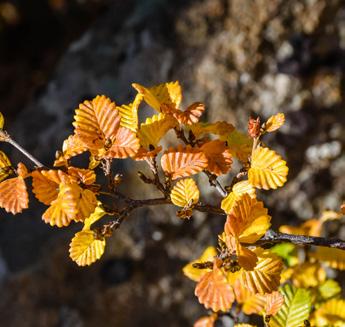




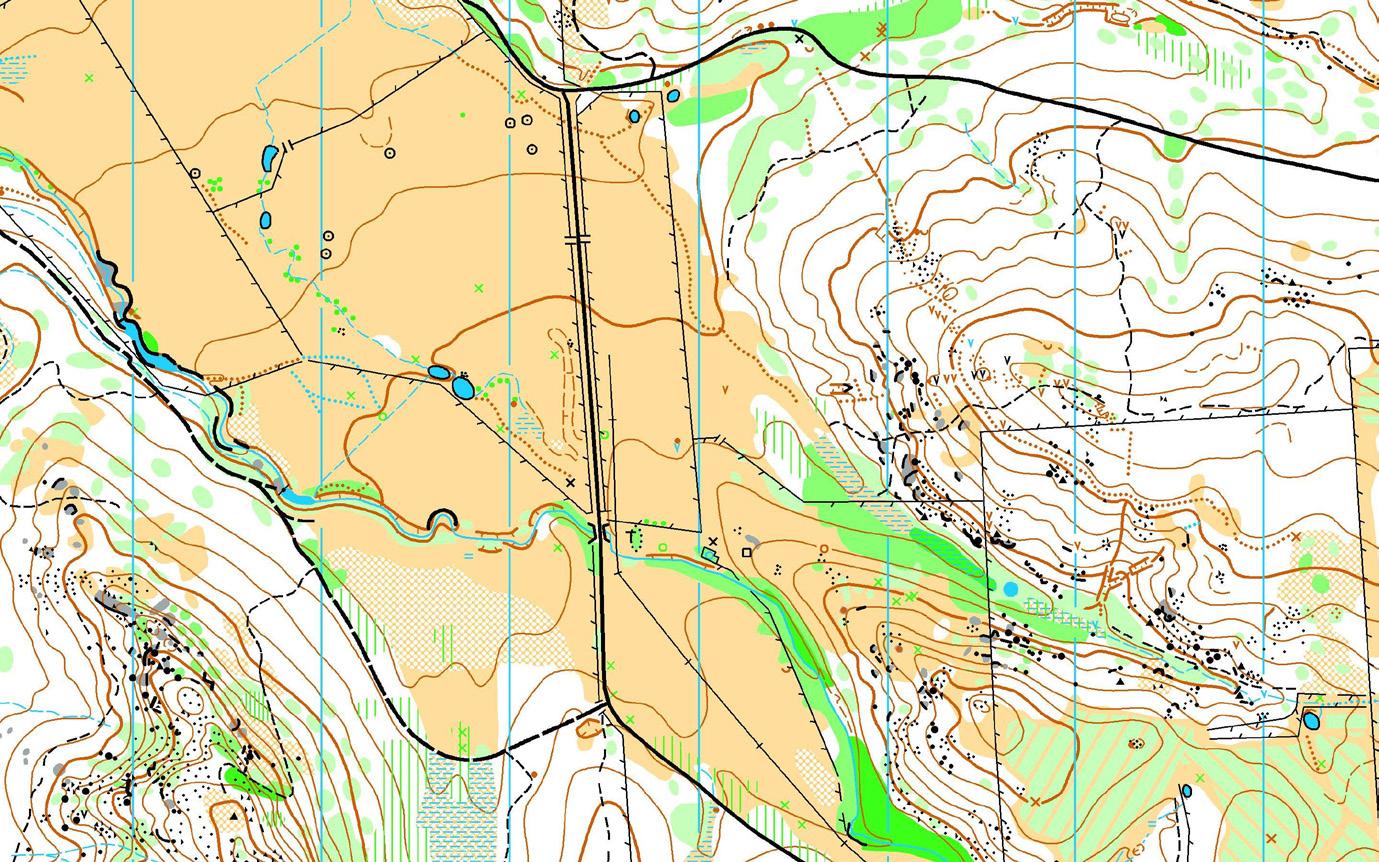
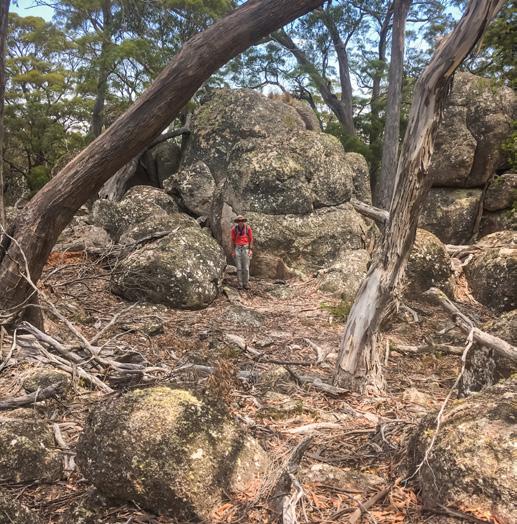



Website: auschamps2026.orienteering.asn.au/

Entries: via Eventor @ eventor.orienteering.asn.au



RACHEL COLLINS, PSYCHOLOGY COACH


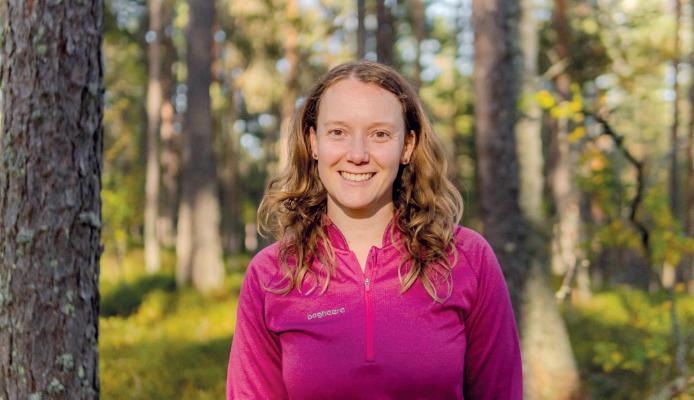
indfulness is a skill that you have potentially already heard of but maybe not in the context of orienteering. Mindfulness simply means, the ability to focus your attention on the present moment without judgement.
How is mindfulness helpful for staying disciplined during orienteering?

As mindfulness draws our attention to the present moment, it can help us in recognising when we have become distracted. By bringing this distraction to our conscious awareness, it creates a choice, continue being distracted or consciously deciding to let that distraction go. The diagram below gives a pictorial view of how this mindfulness process works.
Mindfulness is a mental skill that can be trained, even whilst carrying out simple daily tasks, for example, whilst washing up or brushing our teeth. Just start to notice what you are experiencing in that given moment, what thoughts you may be having or what bodily sensations you can feel. Remember, you aren’t judging what is showing up, just building an awareness.
Another great example is mindful walking, going out for a walk whilst intentionally focusing on the steps you are taking. Noticing how your foot feels when it touches the ground, how your arms swing as you walk.
Another good tool is a mindful body scan to observe how different parts of the body feel, bringing your attention to each part of your body at a time.
By practising mindfulness, it will allow you to become aware of what is happening for you at any given moment, you can do this during an orienteering race. With this more accessible awareness you can start to pick up distracting cues much quicker, which in turn, helps towards minimising those orienteering mistakes.
Top tip: Download the app, Insight Timer, there are lots of body scan practises there for free that can help start to build your awareness.

1. A distraction occurs, either internally (e.g. a doubtful thought) or externally (e.g. you see another competitor).
2. Our brain interprets this distraction based on previous experience.
3. We are being mindful, allowing ourselves to notice what is happening in our mind and body. For example, if we see another competitor, we might notice an increase in heart and

breath rate. This can cause a sense of urgency in our mind and body.
4. By bringing it to our conscious awareness, we have now created a choice. Do you want to continue engaging in this distraction, or do you want to let the distraction go? When we choose to let the distraction go, it allows us to stay disciplined (focus on our navigation) as we are no longer being distracted.
If you’d be interested in purchasing this webinar miniseries, please email me at hello@rachel-coach.com
If you are interested in working 1-1 then please take a look at my website: www.rachel-coach.com
Instagram: @rachel_coach_athletes
LinkedIn: Rachel Collins (founder of Rachel-Coach)

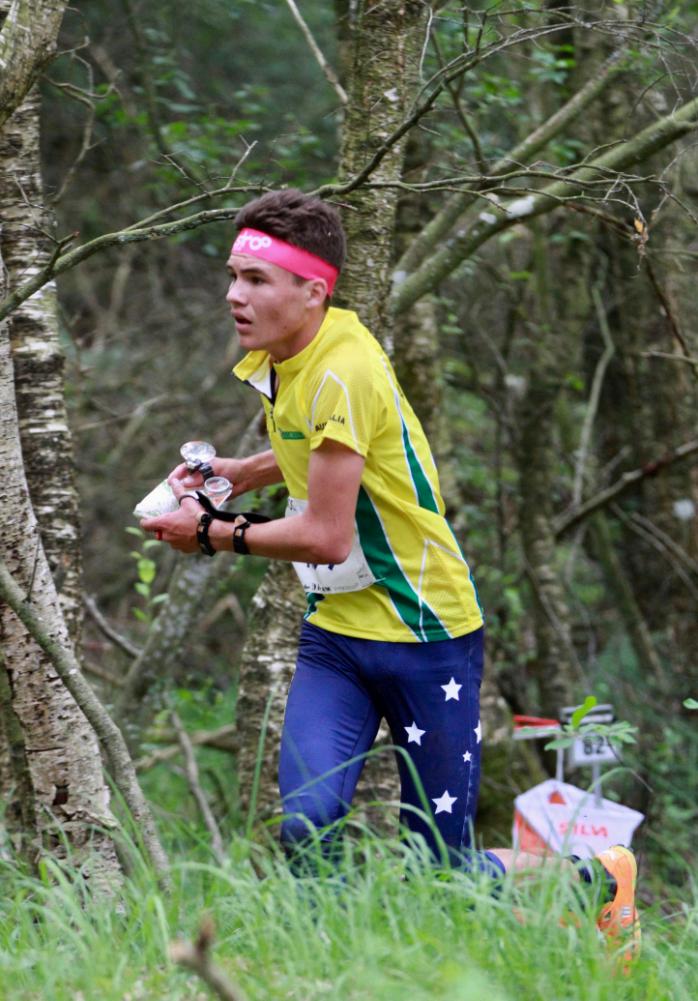





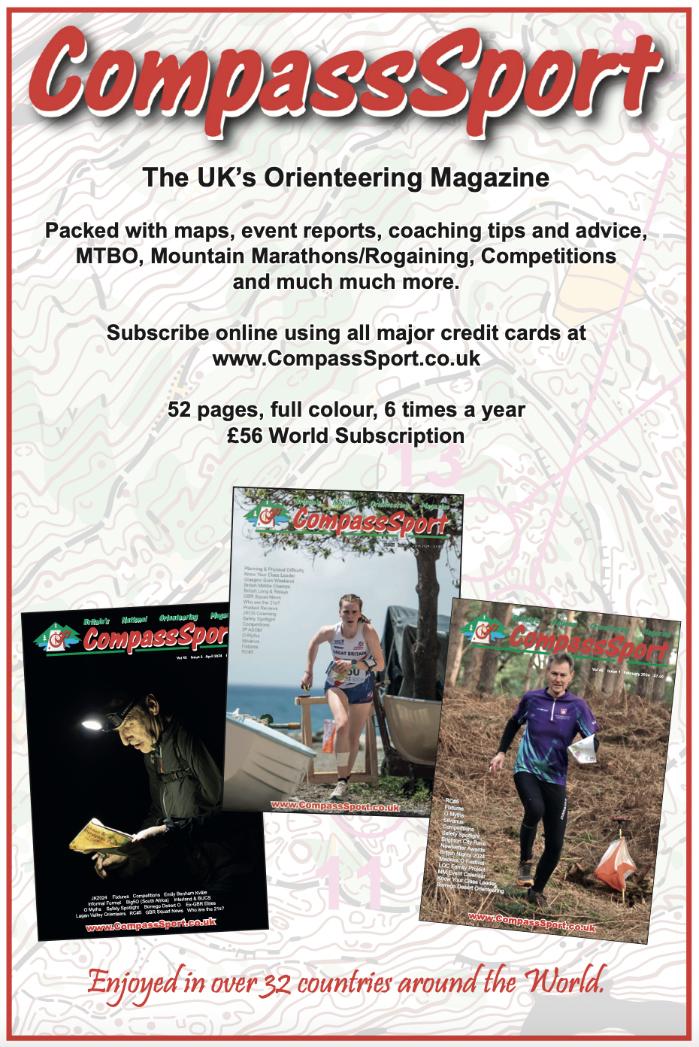

European Youth Orienteering Championships 2026 (EYOC2026) will take place in Nova Gorica, Slovenia, 24 – 27 June 2026.
https://www.eyoc2026.si

Nova Gorica, is a city with a rose in its coat of arms, and rose plantations everywhere. It is a town in western Slovenia, right on the border with Italy, near the city of Gorizia. It will be a fantastic karst terrain at 830-1020 m above sea level, and a unique opportunity to compete with 500 best youth European orienteers.
Programme:
24 June Wednesday - arrival, model events
25 June Thursday - sprint, opening ceremony
26 June Friday - long, friendship party
20 June Saturday - relay, closing ceremony, departure
Competing classes:
MW16 – born in 2010 or later MW18 – born in 2008 or later
Australian Youth Squad for the trip to EYOC2026
Three great public O-races will be organised on 25-27 June for all parents and public.
Information on the selection process, including how to nominate, will be published later.

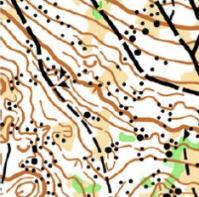
If you would like to attend, please get in touch with Marina Iskhakova (squad coach) and Fedor Iskhakov (squad manager). marina. iskhakova@gmail.com Mob. +61 412 308 310
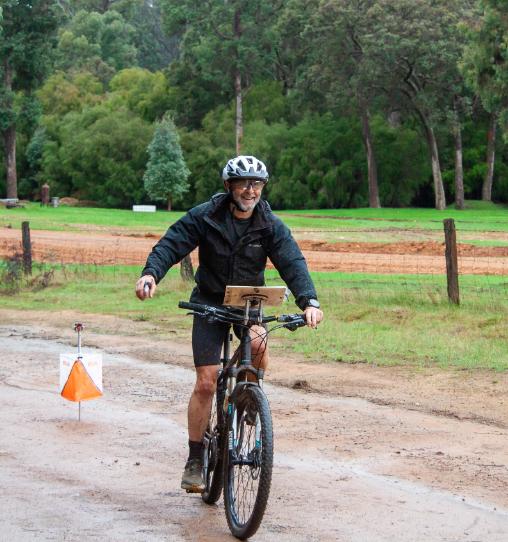
AUSTRALIAN CAPITAL TERRITORY
ACT Sprint Series (participation: 74 starters)
ACT Schools Champs (61)
NEW SOUTH WALES
SOS Hills District (40)
SOS Northside (81)
2024 Sydney MapRun #16 (24)
Newcastle NOY 8 (85)
Goldseekers Bush #6 (37)
Wagga Wagga Local Event (12)

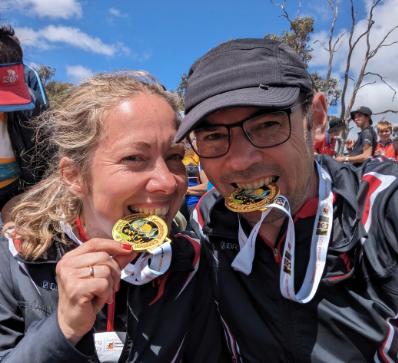

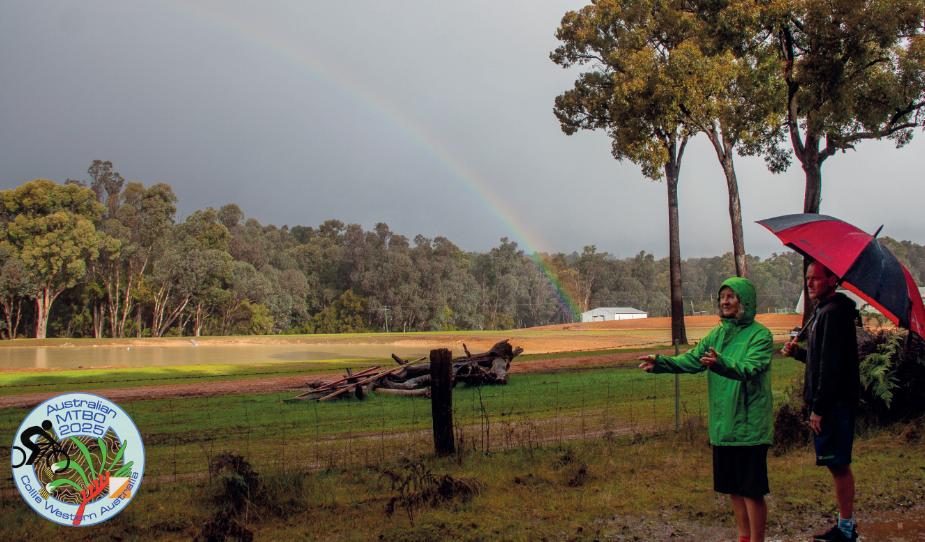
QUEENSLAND
OY10 Murrenbong (78)
MapRun Parks 2025, Jamboree Heights (12)
SOUTH AUSTRALIA
Port Lincoln (30)
TASMANIA
Tolosa Park, Southern Local #7 (98)
Peninsula
Ballarat Bush - Enfield (33)
WESTERN AUSTRALIA
Aus MTBO Middle Champs (67)
Aus MTBO Sprint Champs (66)
Aus MTBO Long Champs (72)



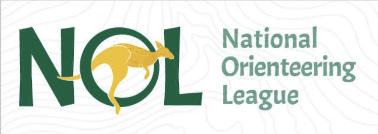


Find five differences between the two maps. The map directly below is Deebing Creek, ASOC 2025 Relay. Mapper: Geoff Peck.

1. On the map above what may each brown triangle represent?
A. Termite mound.
B. Large boulder.
C. Monument.
D. Teepee.
E. Boulder cluster.
HANIA LADA
Find the highest point on the map below. Then draw how you would go from there to the junction of the fence and track in the north east.

2. What would be the best description for control 2, i.e. what is in the centre of the circle?
A. Gully.
B. Track bend.
C. Western end of watercourse.
D. Track and watercourse junction.
E. Watercourse junction.
F. Spur
3. Who won the World Cup 2025?
A. Simona Aebersold and Kasper Harlem Fosser.
B. Tove Alexandersson and Matthias Kyburz.
C. Simona Aebersold and Max Peter Bajmer.
D. Pia Young Vik and Martin Regborn.
E. Cécile Calandry and Tomáš Křivda The answers are on page 46.

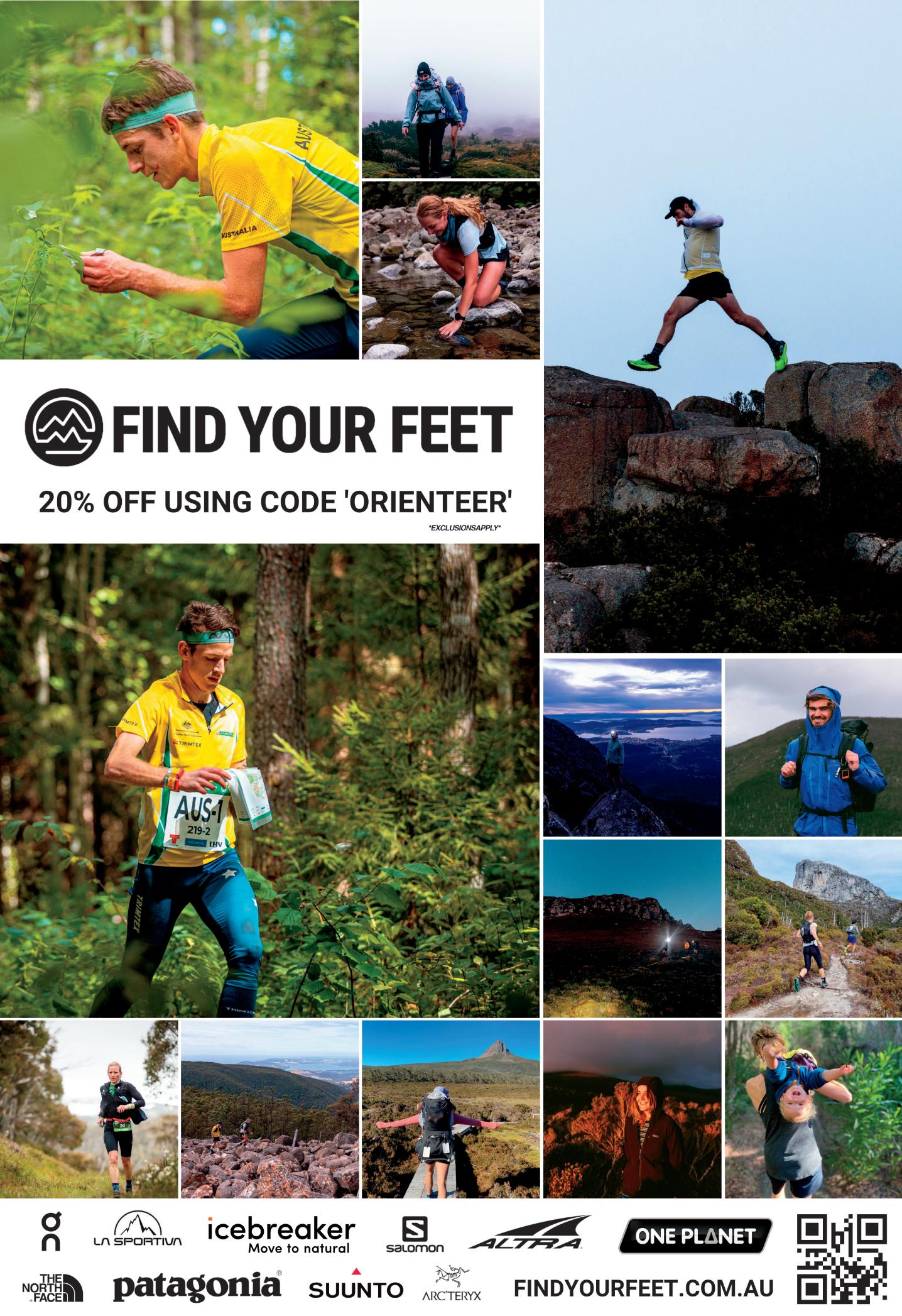


The IOF Council has decided to introduce an interim heat policy that comes into effect immediately for all IOF events covered by IOF Competition Rules with expected winning times of 20 minutes or greater. The interim policy has been developed by IOF Medical Experts and contains guidelines to ensure that competitions are not held in weather conditions that may be dangerous to competitors, officials or spectators.
In these interim guidelines, IOF has adopted the Wet Bulb Globe Temperature (WBGT) as an indicator of heat stress. The WBGT is an index which combines temperature, humidity, solar exposure and wind and is used by a number of international sporting federations and in the heat health community more broadly. IOF recommends that organisers consider cancellation or postponement of events when the WBGT exceeds 30 °C to 32 °C. The guidelines contain instructions for calculating the WBGT score and can be found in full here [in the file IOF interim guidelines on extreme heat] under the Generic documents and templates folder.
The new, interim heat policy is a precursor for a permanent heat policy, which is expected prior to the 2026 northern hemisphere summer. IOF will ensure that all relevant organisers receive information about the new, interim guidelines and how they should be complied with in practice.
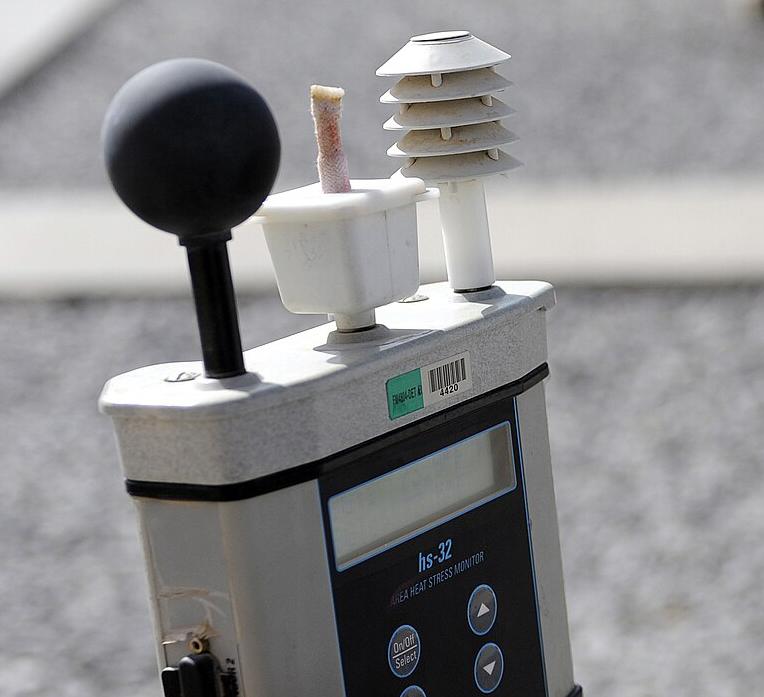
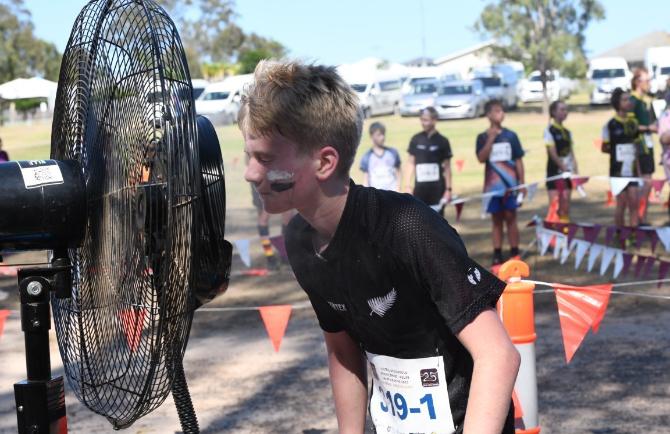
DR DAVID GODDARD (OCCUPATIONAL PHYSICIAN), COURTESY OF YARRA VALLEY ORIENTEERING CLUB NEWSLETTER - OCTOBER 2025
IOF interim policy on heat
The International Orienteering Federation (IOF) recently released an interim policy for when conditions of temperature and humidity are severe enough for an event not to be run.
Much of the structure and energy requirements of our muscles, heart and brain is controlled by proteins. These function best within a fairly narrow range around the normal core body temperature of 37 °C. An excursion beyond about 40 °C is likely to harm these proteins and the parts of the body that they are in.
Physical activity outdoors such as high-performance orienteering adds heat to our bodies by the vigorous use of our muscles. Even more heat may be added if the air temperature is high or by radiation from hot surfaces such as sun-baked soil, asphalt or concrete. Continued accumulation of heat raises our inner or core body temperature.
To avoid a rise in the temperature of our body when we run on warm days, our body sheds heat most particularly by evaporation of water from the skin and lungs. Evaporation cools. The usual source of our skin moisture is sweating. To take advantage of this cooling of our skin, our body re-routes
some blood from our innards to the skin. This reddens our skin and cools our blood.
Sweating and redistribution of blood saps energy, so we get fatigued earlier on hot days. Fatigue gives our map-reading a narrowed focus and we become slower to make capable decisions.
When blood is diverted to our skin, our heart and lungs work harder. Fast deep breathing rapidly expels carbon dioxide and this slightly lowers the content of acid in the blood (alkalosis). When combined with some loss of salts in sweat, alkalosis can cause muscles to spasm (cramps).
Even with diversion of blood to our skin, our muscle movement squeezes enough blood into our circulation to maintain adequate flow to our brain. But when we stop running, our blood flows more slowly back to the heart and we can feel faint and want to sit down.
If heat gain is intense, we sweat profusely. Drips of sweat fall to the ground instead of evaporating, so their value is lost. With this, our body cannot maintain full control of body temperature. An indication of this is nausea (‘feeling sick’) which is common to fever from any cause, be it CoViD or intense exercise. All this sweating starts to dehydrate our body and we feel very thirsty. This situation is retrievable by cooling through rest, drinking of water, sitting in a breeze or fanning dampened skin, and shade. Replenishing water lost
from sweating is most quickly achieved by drinking plain water.
However, if running and gain of heat continues, our body temperature climbs. Together with the dehydration, our body prioritises maintenance of circulation above all. Sweating reduces. This hastens further temperature increase. Thinking is impaired leading to confusion and odd behaviour. There is urgent need for rapid cooling of our body – a medical emergency.
In general terms, the elderly are more likely than youths to have an increase in body temperature when competing in hot conditions. Reasons include a variety of medications that can affect the strength of the heart beat and an ability to produce enough sweat. Commonly, there is also a lowered sensitivity to dehydration and sense of thirst.
A useful measurement
Evaporation of sweat depends upon having relatively dry air around us. If the air contains much water vapour, then our sweat simply falls to the ground before it can evaporate from our skin. So, this vital method of cooling our body can fail if the air around us is too moist, too humid.
The amount of heat that we must lose depends mainly on our level of physical activity. To help predict whether conditions permit us to lose the heat that we need to, we use a measurement. One widely used measure for outdoor situations combines into one number the readings from three thermometers that project from a convenient hand-sized meter. This number is called the WBGT (Wet Bulb Globe Temperature) index. (Formally, a more precise WBGT index is obtained if the thermometers are larger and placed on a stand.)
Each of the three thermometers projecting from the meter has a different name, appearance and function. The first (on the right of the picture on p30), called dry bulb thermometer, is an ordinary thermometer bulb with a shade cowl that measures the temperature of the surrounding air. The second (in the middle) is a thermometer bulb that is dressed in a little white sock wetted with pure water from a small reservoir. It is called a natural wet bulb thermometer, the ‘WB’ part of the index.
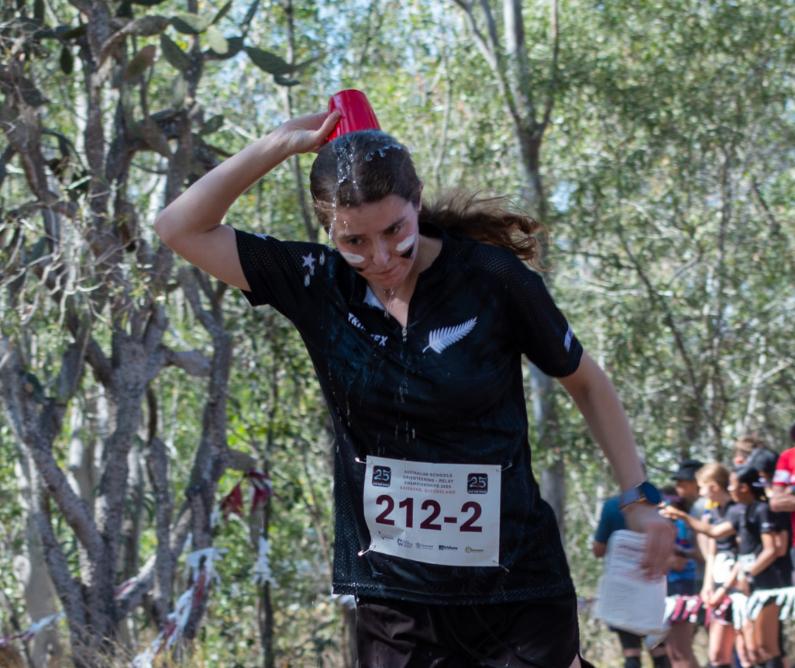
Water evaporating from the little wet sock cools the surface of the wet bulb – just as evaporating sweat cools the skin surface – so this thermometer has a lower reading than the right-hand one. However, if the air is already full of water vapour (very humid conditions) there will be little or no evaporation from the sock and so little or no difference between these two temperature readings. The third thermometer assesses radiant heat. It has a sensor surrounded by a small sphere made of thin copper and painted matte black. It is called a globe thermometer, the ‘GT’ part of the index. To make the number that is the WBGT index, the meter electronically adds 0.7 of the wet bulb temperature, 0.2 of the globe temperature and 0.1 of the dry bulb temperature. Like any instrument, a WBGT meter must be calibrated frequently to remain reliable. The action limit of the WBGT measurement that is suggested for the heavy physical activity of orienteering is higher than under guidelines for workers doing comparable physical labour. This seems reasonable because, on average, orienteers are quite physically fit, the duration of heavy physical activity is shorter than a work shift, much running is shaded, and we know to take sensible precautions such as drinking ample water. And too, astute event organisers will arrange for the more vulnerable elderly competitors to run before the day heats up.
To decide to cancel on the actual day of an event may anger those attending. Courtesy would dictate predicting the WBGT a day or more in advance. Whilst the Bureau of Meteorology does not publish predictions of WBGT, such predictions can be deduced using the Bureau’s predictions of air temperature and level of humidity along with published tables to predict an approximate WBGT index.
The standard globe thermometer has a larger (15 cm diameter) globe with the thermometer bulb placed centrally within. This takes longer to equilibrate than the smaller globe on the hand-held meter so, in workplaces, the latter is used for convenience. Long ago, these larger globes had a different purpose – as a hollow copper float in an old-style chain-pull toilet cistern.
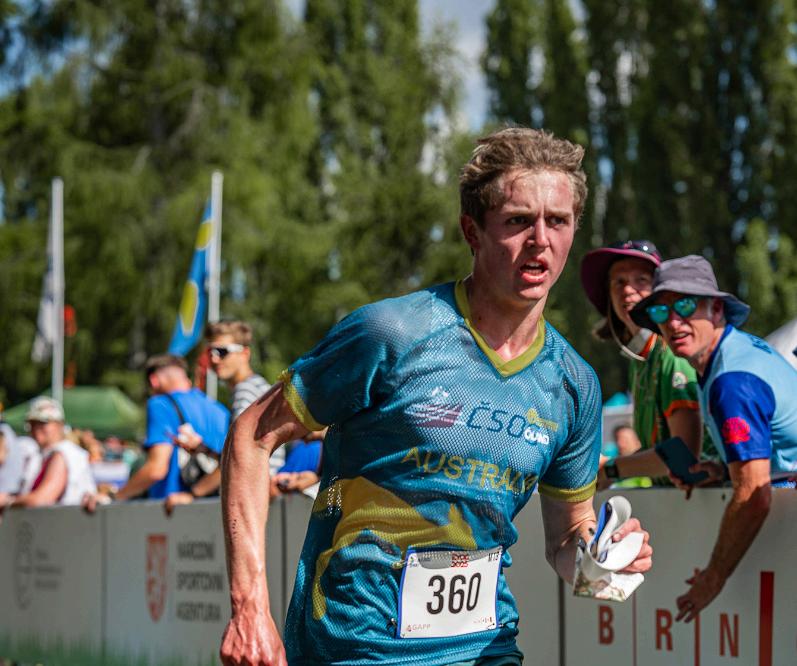
DAVID JAFFE
In the June edition of this magazine Grant Bluett asked why we were bothering with live tracking if the footage isn’t going to be visible till after the race. The UK’s Nick Barrable then suggested mechanisms to make this possible and proposed including age classes other than elites. We had live tracking visible in the arena at the Oceania Orienteering Championships Long at Kangaroo Crossing in 2019, various events in the 2022 Australian Championships carnival and other past carnivals. Many events have shown it is possible. I think it adds to the spectator experience, and it hasn’t been confined to the elite classes. In a similar way Australian 3 Days 2021 in Orange enabled live spectating, but using phones, which also meant we could watch exciting racing in the arena, so big screens aren’t essential.
Perhaps it isn’t a natural act to have live tracking visible on screens or phones in real time. It’s really easy for controllers and planners to say no. Making races visible live involves collaboration by organisers, start-time planners, course setters and controllers, and some extra work. I’d hope that this extra effort is worth it, if it creates great arena experiences, and it never needs to compromise event fairness. So let me describe six things that we did to enable live ‘race watching’ at Kangaroo Crossing in 2019, and perhaps this methodology can be re-used.
1. We had a plan for the arena and manipulated start blocks We made a half-hour by half-hour plan (see below) of what would be happening in the arena and what would be visible on the screen. This meant planning the start blocks of each age class so that we got finishers in the arena or runners on the screen when we wanted. This produced a clear plan for the commentary team on what to focus on at each point of the day. The plan made sure that each of the four elite courses had ‘some time in the sun’. So, W20E likely winners were planned to finish between 12:30 to 1 pm, M20E 30 min later, and so on.
2. We picked other age classes to track
We put optional trackers on the M/W65A and M/W14A age classes so that we had other classes on screen before the elite competitions. The choice of M/W14A was deliberate because this age class used few complex controls, and the controller was comfortable to display this early. We agreed not to show any courses until all in that age class had left the arena.
3. We changed the display map for the first courses tracked
We were able to display a modified corridor version of the M/ W14 map in consultation with the controllers. That meant we
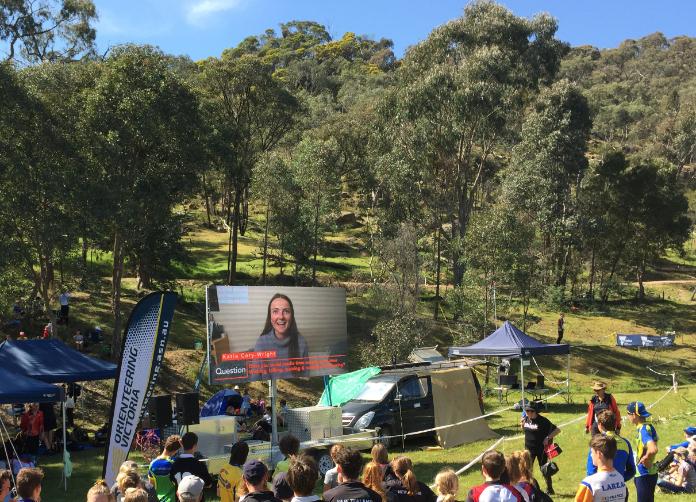
could show live racing to all competitors in other age classes as soon as the last 14 year old had left the arena.
4. We exploited a natural quarantine
Showing things on the big screen was made even easier because it was a long walk to the start and that became a ‘natural quarantine’. This meant everyone left the arena at least 15 min before their start. Therefore, we could start showing the race 15 min before the last elite start. It turned out there was a hidden benefit in having a 2 km walk to the start, and we threw in an episodic quiz to try and make that a fun experience.
5. We had a run through/arena passage to keep it interesting As well as tracking on the screen, Warren Key set all elite courses with a run-through and map change so that there were multiple ways for the spectators to see how the race was panning out. Warren added a further twist by setting a huge route-choice leg straight after the map change to get elites thinking!
6. We didn’t collect maps
The biggest discussion point before 2019 was not the live screen but our request not to collect maps from finishers. We wanted all competitors to be able to finish and compare notes in the arena and we trusted them not to show those who hadn’t started. The controllers agreed and this model has been used many times since.
So, it does take a bit of work to create live tracking and a spectator experience but it is also fun to plan. If anyone wants our planning tools please feel free to get in touch! We are happy to share!
Around age 40, my love for orienteering waned, and I later realised it was because of the declining eyesight and my struggleto read the maps, even with glasses. 1:15,000 maps are nearly impossible, and 1:10,000 maps are a challenge. This makes navigating while running difficult, diminishing my enjoyment of the sport.
However, orienteering in Sweden has been a revelation. The challenging terrain and soft ground that is more forgiving for my aging body is a plus, but the real game-changer is their maps. For those 45 and older, Sweden provides 1:7,500 scale maps, which are clear and readable on the move. Yes, these maps can be large—sometimes like carrying a broadsheet newspaper—but the clarity they offer is worth it. They allow me to plan ahead and fully engage with the course.
Occasionally, I’ve had the chance to run on 1:7,500 maps in Australia, and it’s been fantastic. I urge major event organisers in Australia to adopt this practice for competitors aged 45 and over. Providing 1:7,500 maps for all forest distances would be a game-changer, making orienteering more accessible and enjoyable for older participants with fading eyesight.
Grant Bluett
MALIN NIGGLI, COURTESY OF SWISS ORIENTEERING MAGAZINE 05-2025
TRANSLATED BY SUSI STRASSER, EDITED
Safe training setup - from when and how?
As with any sport, injuries can occur during strength training, for example, due to incorrect execution or too fast an increase in load. Muscle strength can be noticeably increased within four to six weeks. ‘However, passive tissue such as ligaments, bones and cartilage need three to 12 months to adapt,’ explains Daniel Kobel, head of the National Performance Centres (NLZ) in Bern and Zurich. High loads during growth are particularly risky: If growth joints are damaged, there is a threat of permanent damage such as premature growth stop or malpositions. However, these risks can be avoided with reasonable dosage and professional guidance. In its brochure ‘Athletics Training for OL’, Swiss Orienteering recommends a systematic training structure between nine and 11 years. At this age, you should start playing with running and strengthening exercises with your own weight. The goal is a broad basic strengthening. With increasing age, training with free weights can be introduced. At the age of 16 to 17, the increase in performance comes to the fore. These include more intensive forms of leg strength training, jumping exercises and gentle free weight training. An introduction by specialists is important before adolescents train with additional weights. If the scope of training is
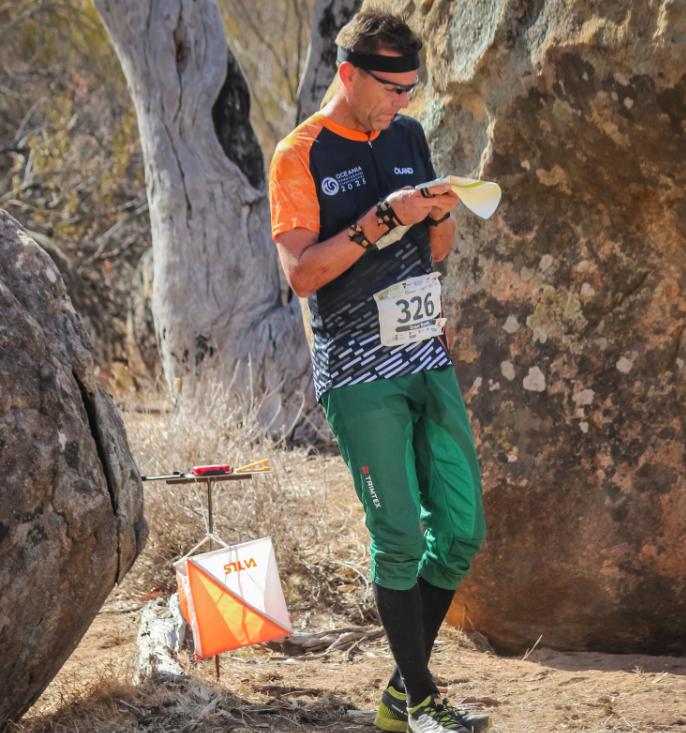
increased, a specialist should carry out a screening in order to recognise weak points in the musculoskeletal system. In the Swiss OL junior squad, this happens regularly through the annual sports medical examination. Strength training seems to be complex in adolescence, and places high demands on coaches and athletes. But Daniel Kobel explains why it is still indispensable. ‘Leg and core stability are crucial when running at any age for performance and injury prevention. In addition, early strength training creates the basis for further expanding performance in the elite age with targeted barbell training.’
Properly guided strength training and attending the gym at a young age can be a clear gain, but without expertise and support, they can become a risk.

LUKAS JENZER, COURTESY OF SWISS ORIENTEERING MAGAZINE
BY SUSI STRASSER, EDITED
Higher intensity, more strength training, a lot of sleep and an adapted diet are decisive factors to stay efficient for longer. Lukas Jenzer explains why.
An eternal life: what a sweet dream! The business underlying this dream is running at full speed. Research is being pushed forward, the industry promises miracles and sells ‘young cell transplantation cures’ and pills of all kinds. Still, the decline in physical performance and cognition with age are a hard reality of our lives; at some point it will all noticeably go downhill. But could we slow down this descent and the whole ageing a bit?
Maintain quality of life and wellbeing for as long as possible? More than that: stay powerful and agile until old age? The goal is tempting and indeed some solutions exist, the recipes for legs that want to stay fast.
Joe Friel is a sports scientist, the author of several non-fiction books and specialist articles, who has made a name for himself internationally as an expert in endurance sports. For his book entitled ‘Fast and fit from 50’, the US-American has examined no less than 250 studies and synthesised the science-based findings into helpful tips for being able to train successfully and compete for many years to come. This text is based on these findings. Individual customisation is recommended. Specifically, Friel proposes four essential measures to counter the ageing process. According to research as well as sober selfknowledge, the three major age-related limitations of performance are a reduced aerobic capacity, increasing body fat and shrinking muscles. With increasing age, one must therefore approach things differently than in the physical prime of your life in order to remain fast in old age. The decline increases noticeably in endurance, depending on the starting ability, at 50 and accelerates at 70.
1. High-intensity training
Ideally, the usual volumes of weekly training should be maintained if possible at senior age. However, the success factor for the maintenance of performance is the increase in intensity. High-intensity training, more than endurance training, counteracts the reduction in performance in old age, which is caused by the decrease in the maximum oxygen absorption capacity (VO max). To increase the aerobic capacity, Friel recommends short run series of five to ten times for 30-60 s each with a 30-60 s break in between. Such a training may be completed once a week with pulse frequencies of up to 170. In addition, the aerobic threshold is increased with lactatethreshold intervals. Tempo runs of three times 5-10 min with a pulse of up to 155 are used for this purpose. It is interesting that memory performance also increases with interval training.
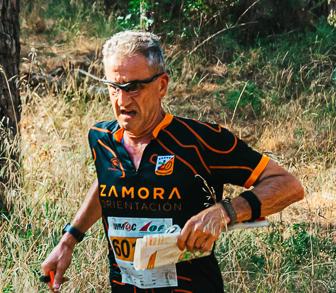

2. Power training
Muscles can grow back with the skin above showing traces of life. Working with weights produces muscle-forming hormones, delays the loss of strength and at the same time increases endurance performance because large muscle groups get tired more slowly. In addition, what a nice side-effect, the calorie consumption increases. Friel recommends one to two units of strength with 3 x 20 or even only 15 or 10 repetitions but with heavier weights. Beauty awards for shapely upper bodies no longer matter. A targeted exercise program for those muscles that you need as a runner makes sense: calves, thighs, buttocks and especially the trunk. Both high intensity and strength training should be increased carefully and only slowly.
The facts are clear: the more you sleep, the higher your life expectancy becomes, regardless of your sporting activities. Plenty of sleep also reduces the appetite for sugar and promotes tissue regeneration. Of course, after interval and strength training the body needs more sleep and rest anyway.
One kilogram of excess fat costs about 2.5 s/km when running. High-intensity running and strength training consumes more fat than endurance training. So, better more of it! In addition, in old age the requirements for nutrition change significantly. A lot of protein from animal and plant products is beneficial. Meat is recommended, eggs and fish. Moreover, tofu and quorn as well as dairy products and legumes are recommended. It makes sense to distribute the protein intake over the day, depending on body weight, into three or four portions of ~20 g. Protein is much more satiating than fat and carbohydrates. In addition, there are foods with a low glycaemic load, such as avocado, nuts, rapeseed, olive and nut oils as well as fibre that do not greatly raise the blood sugar levels.
Use it or lose it
Body and mind complement and support each other. Therefore, wellbeing is at the centre of the considerations for all loads and adjustments to the daily training of senior athletes. Moderation is key when it comes to interval and strength training. When in doubt, a little less training is always better than too much. So, what should be omitted when you feel tired? According to Joe Friel, the list of priorities is as follows: frequency before duration before intensity. ‘Use it or lose it’, in other words. This principle also applies to cognitive performance and coordination. As we age athletes would do well to learn something new every day. The possibilities are endless: running sideways or backwards, balancing on logs, riding a racing bike and mountain biking on trails, juggling, brushing your teeth while standing on one leg with your eyes closed. And of course, studying maps. After all, our sport is orienteering.
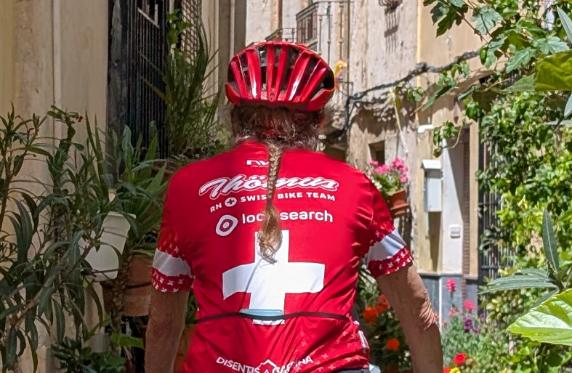


To follow the rules, you must first be aware of the rules… Part
ALASDAIR
PEDLEY. THE MAPPER’S CORNER.
[It takes much effort] to make maps true to the spec. So, one primary reason why we end up with maps breaking the spec is that it is just too time consuming. A second reason is mappers being unaware of the rules, but this is probably uncommon in professional mappers. A third reason is automatically converting base data. When maps get made this way, they inevitably break the spec in probably hundreds, maybe thousands, of ways. (…)
Should we have some form of national quality control for maps, particularly maps used for championship events? Some group of people could give maps a ‘stamp of approval’. Sweden does exactly this, in fact with different levels of certification for different levels of events, and maps that don't have the right level of certification can't be used for high level events. The UK has the Mapping Advisory Group which has the expertise to help, but it relies on planners, controllers and mappers knowing they have an issue to resolve and raising it with the group. Perhaps for championship events in the UK we should follow Sweden’s example?
Too often I see hours and hours of work being done turning a ‘very bad’ map into a ‘bad’ map, when you could start from scratch and make a brand new map in a similar amount of time. I wonder how much further time planners and controllers would save by working with better maps, not having to make multiple extra trips to areas to settle disagreements that come down to sub-optimal mapping. The extra workload that results from a bad map increases exponentially with the size/importance of an event.
Start Wednesday 17 December 2025
Finish Sunday 21 December 2025
The National Junior Development Training Camp is supported by the Whiteside Bequest. For more information about the Whiteside Bequest please go to the OA website.


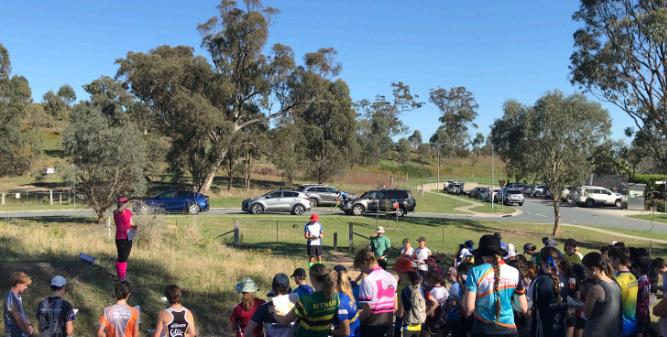
To finish off, a little thought experiment: What happens when we orienteer on inaccurate maps?
● Sometimes we bend our brains a little, make things fit, use some features rather than others, and get by. Fine.
● Sometimes we make mistakes, or rather, lose time. Calling it our mistake is a misnomer; we might have used solid techniques but some discrepancy between map and ground threw us off. Most people, trusting the map, just think they have made a mistake, are bad at orienteering, and go home dejected. Not good.
● Sometimes, we begin to realise the map is bad, stop trusting it, and now we can't really orienteer properly at all. Even worse! What happens when we orienteer on illegible maps?
● Sometimes we slow down, or stop, hold the map an inch from our eyes to see what's going on, just about figure it out, and carry on. Fine.
● Sometimes we misread one thing as another, and blunder into the area looking for the wrong thing. Not good.
● Sometimes we can't read something, don't bother looking closer, and blunder into the area without knowing what we're looking for at all. Even worse!
A good map should be readable while running full speed. The specs define the majority of that. Nature, clearly, does not know of the specs, and neither do town planners or builders. So, the art of mapping is in how you bend reality to meet the specs. A good map allows us to flow happily through the forest at full speed, perfectly in control of where we’re going. Cheers to that.

KBRIDGET UPPILL, DANIEL STOTT & THE ORIENTEERING AUSTRALIA WEBSITE (EDITED)
ID-O is a games-based orienteering program teaching children aged 0-8 basic navigation skills and respect for the bush.
KID-O for the community: Online KID-O Facilitator training is available on the Orienteering Learning Centre. Orienteering Australia is using Australian Sports Commission funding to give $750 as seed funding to clubs wanting to establish KID-O in their local area.
KID-O for schools (Foundation–Year 2), and Early Learning Centres (3–5 year olds): The packages will be ready for the start of 2026.
The first Great Australian KID-O Scavenger Hunt. In June children aged up to ten, from all around Australia, participated in the scavenger hunt. They took photos while orienteering, completed a colouring competition, and answered questions such as the birthdate of the youngest and oldest orienteer at their event.
Thank you to Wildfire Sports and OA for providing prizes for all 28 participating children. Thank you to Felicity Crosato who managed to get over ten children from her club to participate.
We aim to do the scavenger hunt next year again and hope all our aspiring orienteers continue their love of orienteering!

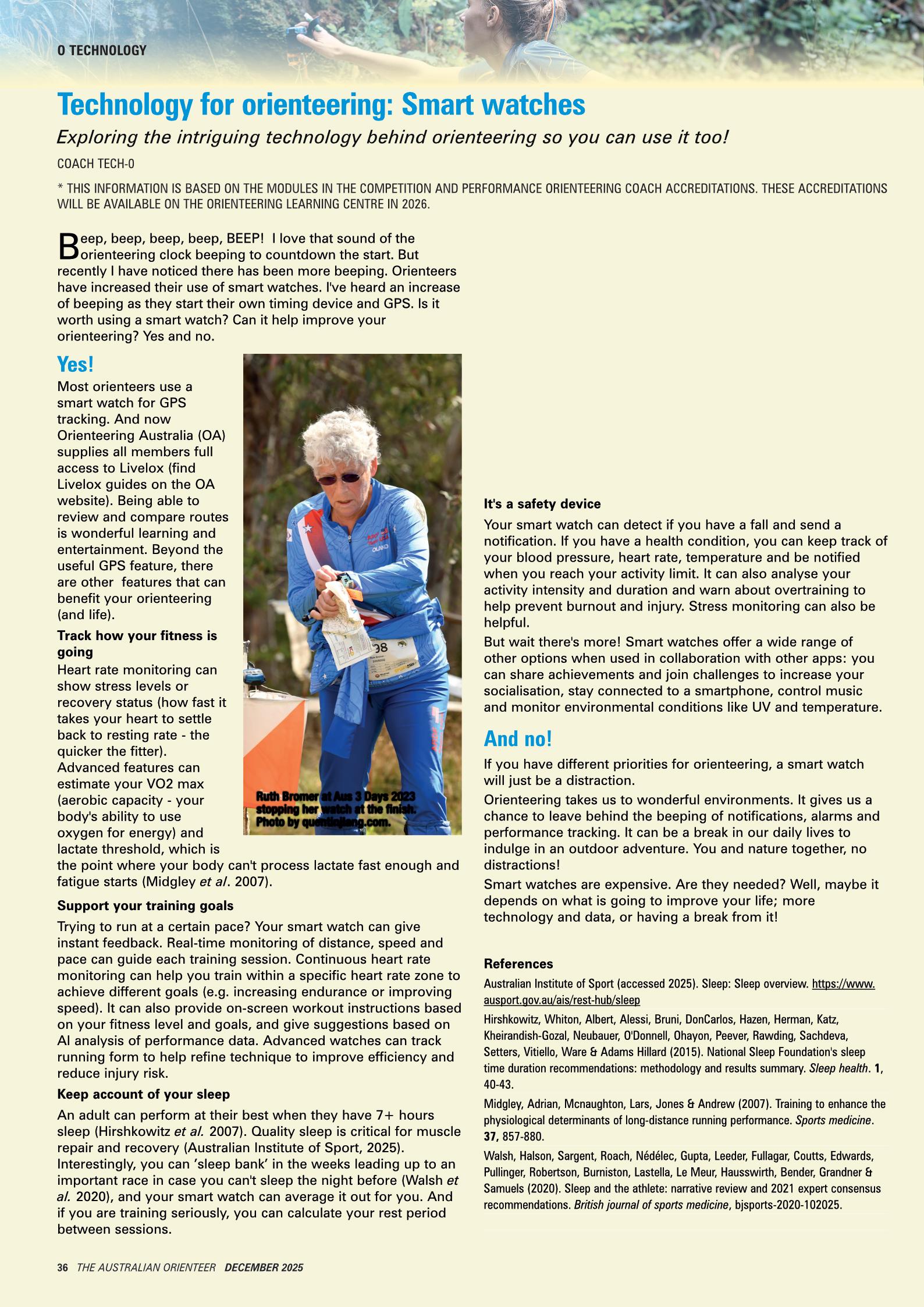




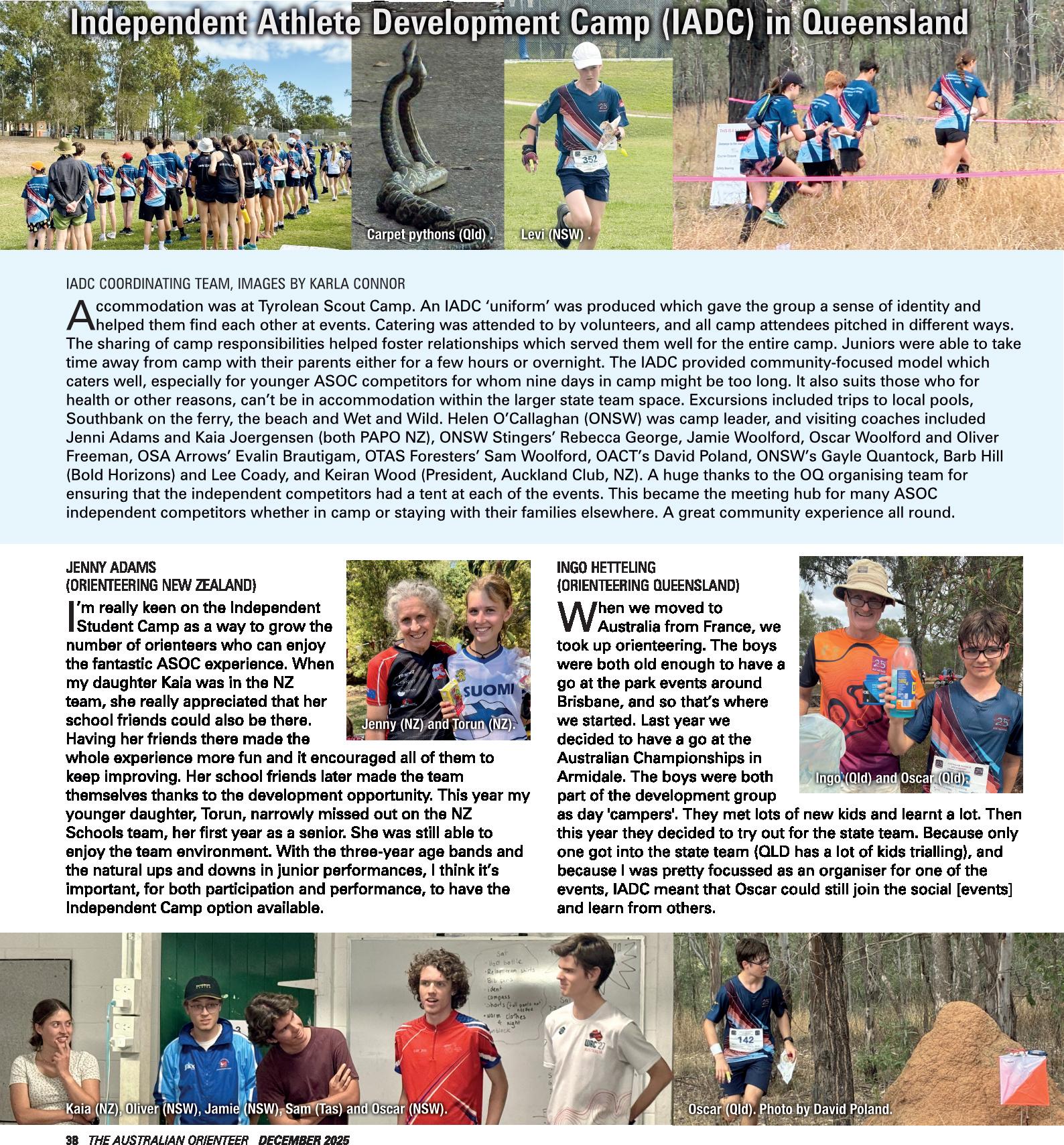
unless stated otherwise
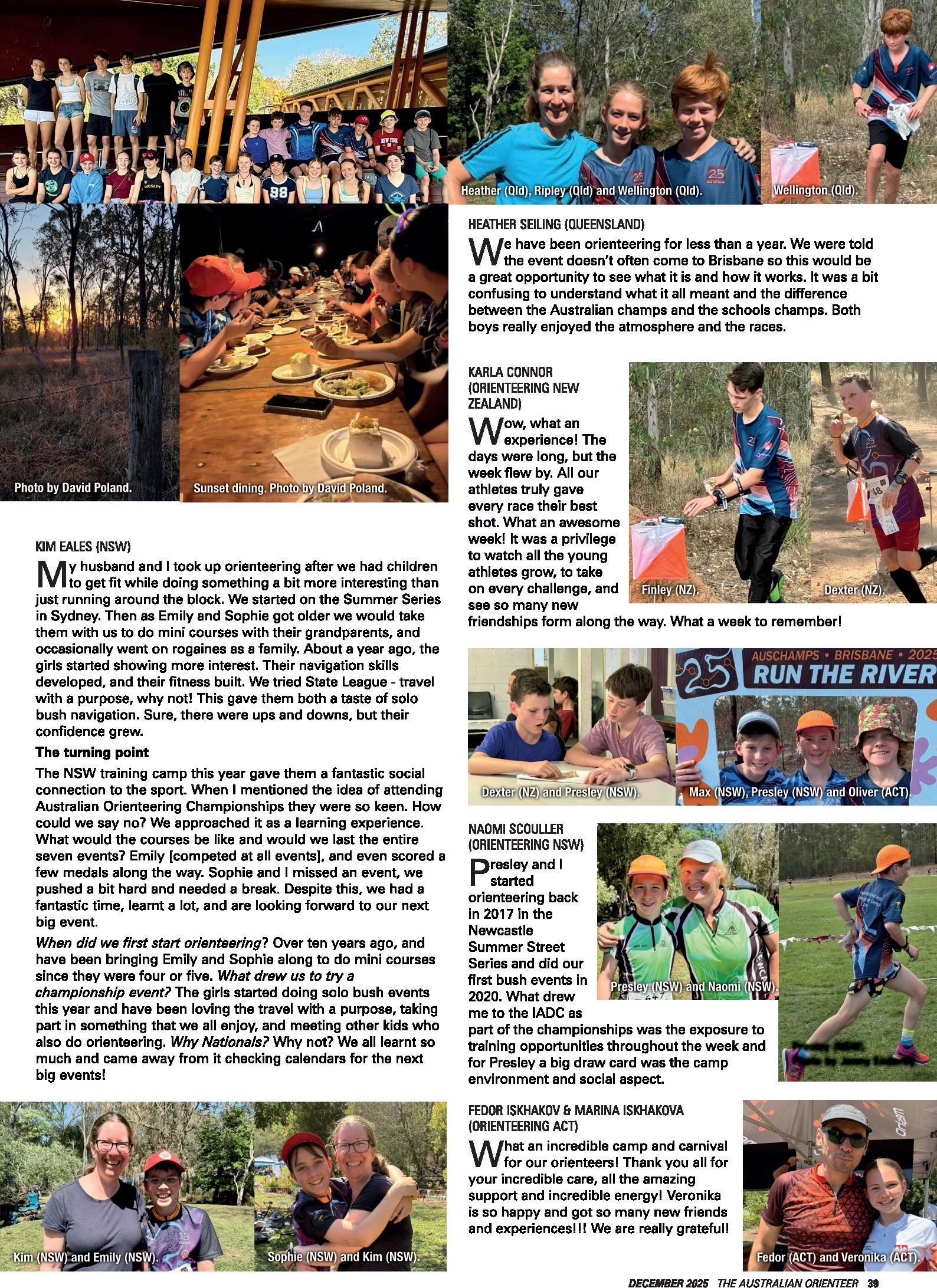
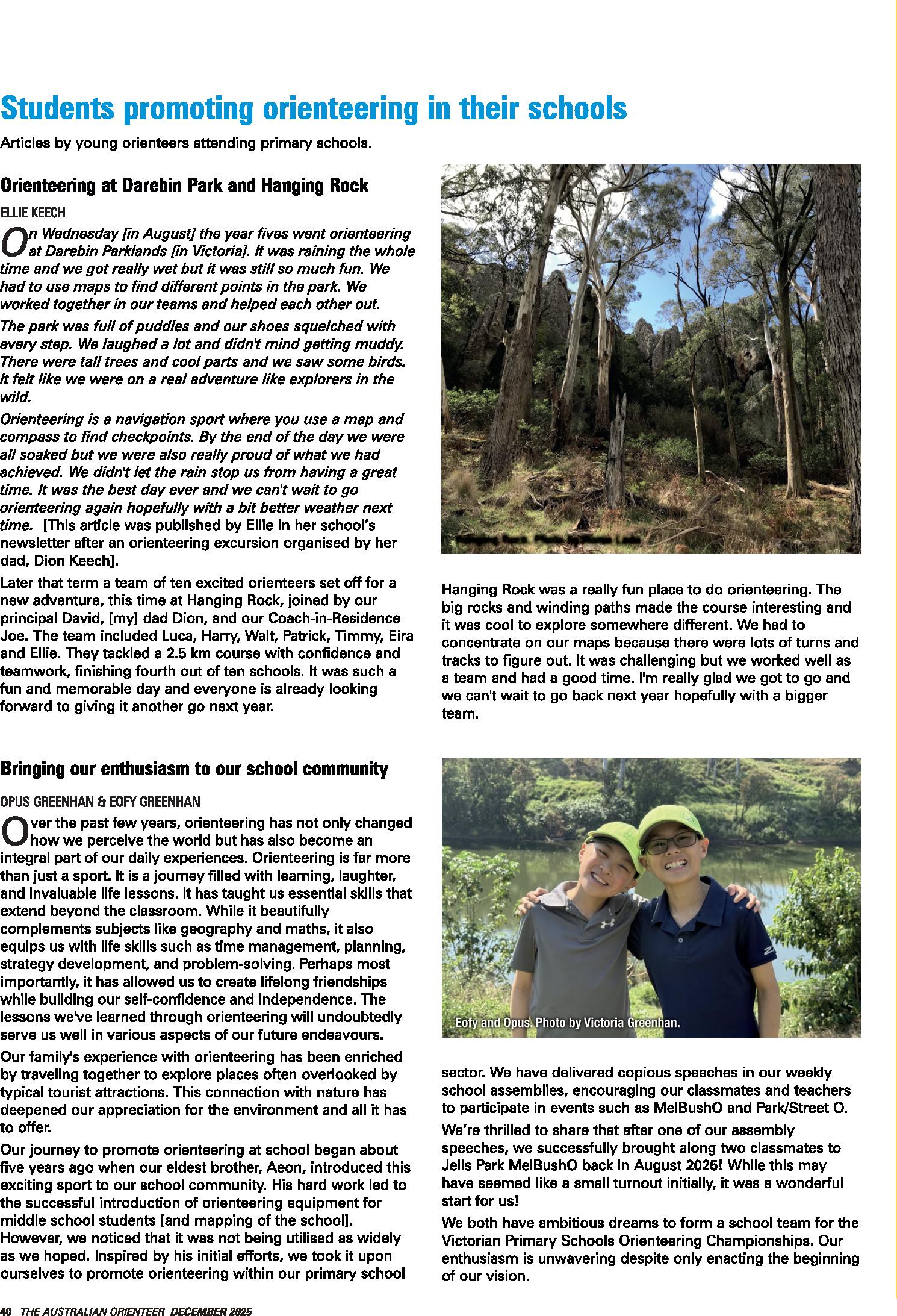

DARRYL ERBACHER - OA STATISTICIAN
The Silva Medal winner is the Australian orienteer with the maximum number of points accumulated from their best six designated events. In the event of a tie, the Silva Medal is determined by count back using the average of the six best winning margins.
The 2025 Silva Medal has been won by Tim Hatley (M65, BK V). He was the only orienteer to win all six designated events, and achieved maximum points of 24. Congratulations Tim.
In 2025 points were awarded for Day 1, (18 April, Psalm Singing Gully), Day 2 (19 April, The Granites) and Day 3 (20 April, Poverty Reef) of the Australian 3 Days, the Australian Sprint Orienteering Championships (27 September, Queensland University), the Australian Long Distance Orienteering Championships (28 September, Platypus Cliffs – Wivenhoe) and the Australian Middle Distance Orienteering Championships (4 October, White Rock)



Statistician: Tim, you are the winner of the Silva Medal for 2025. Congratulations.
Tim: Thanks, Darryl. I’m very surprised with this award!
S: You were the only winner with maximum (24) points this year. This has not happened for a few years now. Why did you stand out this year?
Tim: There’s a certain amount of luck involved. I’ve avoided chronic injuries, so far, and some of my main competitors have not entered M65A class at Easter or Australian Championships this year but I’ve been surprised that I won all the races as it’s still a very strong class!
S: Others had better winning margins than you. Your consistency showed through. To what do you owe your consistency?
Tim: I’ve probably been a bit more cautious with my navigation choices this year so have avoided significant time losses at the major races. This follows my experiences at WMOC last year where I was setting a good pace but missed out on the A finals for the middle and long due to navigation errors from making risky route choices. Also, I did the Competition Coaching Course with Brodie last year which taught me a lot about actual orienteering techniques that I’d previously only been vaguely aware of.
S: When did you start orienteering and when did you win your first major event?
Tim: My first event was in 1983; I was in the Australian Army and it was a Wednesday afternoon military sports activity at Mt Coot-tha, organised by Eric Andrews, and my brother (who was in the Air Force) invited me along. I started competing in the public weekend events soon after this and joined the Ugly
as follows: first – 4 points, second – 3 points, third – 2 points, for otherwise finishing – 1 point.
Those orienteers who obtained 18 or more points are listed below.
Gully Club. As I was a fast runner it was sort of just assumed I’d run Course 1, so I’ve always run A courses (needless to say there were some MAJOR navigation disasters in the early years as I learnt by trial and error). I’m not sure when I first won a major event, probably not till I was in M40 or M45, I wasn’t disciplined enough to follow a consistent training plan when I was running M21.
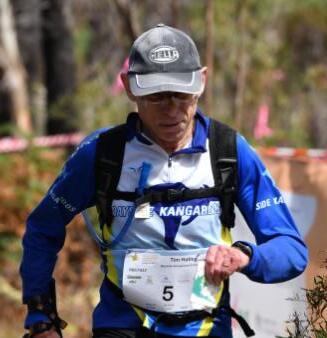

S: Rui Bluett-Jones and Walter Butler won their W/M10 classes. What advice do you have for these up and coming juniors?
Tim: Spend as much time as you can in the bush with a map, go on map walks with experienced orienteers over a variety of areas and learn what all the different features on the map look like in the terrain. Notice what isn’t shown on the map too as that can be just as important in very detailed areas! When you start doing harder courses work with a coach to learn good techniques and fitness programs. Keep it fun!
S: You have won over a variety of maps. Do you have different techniques for different maps?
Tim: Not particularly, I’ve been focussing on the basics; keeping the map correctly orientated, identifying handrails, checking off waypoints, looking for reliable attack points and running as hard as I can.
S: Once again, Tim, well done. Congratulations.
DARRYL ERBACHER – OA STATISTICIAN.
Rankings in non-elite classes have been determined based on results in the Australian 3 Days (31, 32, 33) and the Australian Championships (AS, AM, AL). Points are awarded for each event (at least four starters) completed, on the basis of 100 points for first place, and lesser points for other competitors [in relation to the winning time for the given class]. When more than one orienteer in a class has 100 points, the first-ranked orienteer is determined by the average of their three best winning margins.
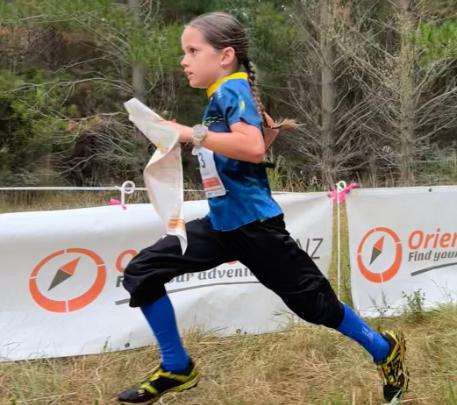
The first ten orienteers ranked in each class with rankings above 50 points are published in The Australian Orienteer. Some points of interest in the 2025 rankings:
Winners by the largest margin were Matthew Crane, M40, AO A, 40.80; Alex Tarr, M80, YV V, 39.23; Rui Bluett-Jones, W10, AO A, 30.18. There was one class where two orienteers scored 100 points: M35 – Richard Goonan EU V; Eric Smyth SO Q.
There were 34 clubs that had members ranked in the first three places: RR A (11); AL T (8); AO A (7); NC N (6); BK V (5); PO A, SH N (4); WR N, SH T, UG Q, YV V, CC N, BG V (3); SW S, SO Q, BO W, GS N, BF N, OH S, NT N, WA S, MF V, EU V (2); NE V, BS A, WO W, KO W, BN N, TJ S, WH N, RR Q, CH V, EV T, BB N (1).
The classes with most ranked runners were, for the women, W14 and W60 (15), and for the men M50 (20).
The most successful states for first places were: ACT (9), NSW (8) and Victoria (8).


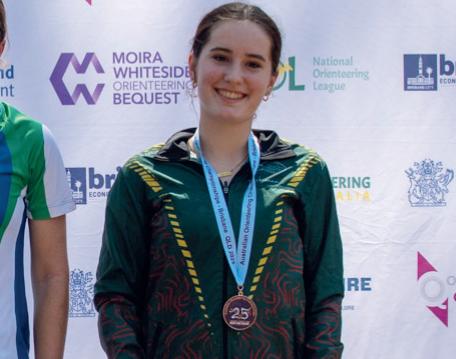





1 Clare Hawthorne MF V 95.21 313233
2 Jenny Casanova WA S 92.34 313233
3 Belinda Allison RR A 90.21 313233
4 Tracy Marsh BF N 89.00 313233
5
6
ASALAM
3133AS
7 Andrea Lux GO N 84.46 313233
8 Natalie Smith PO A 78.45 3132AS
9 Alison Stubbs AL T 72.59 313233
10 Keren Faulkner TJ S 59.76 3133AS
W55 club points events
1 Jennifer Enderby NC N 100.00 32ASAM
2 Cathy McComb SH T 94.47 33ASAL
3 Martina Craig NC N 93.99 3133AS
4 Linda Sesta UR N 90.83 33ASAL
5 Cath Chalmers RR A 88.22 33ASAL
6 Alison Inglis BS A 86.65 313233
7 Sheralee Bailey BN N 78.52 3133AL
8 Julia Jarvis UG Q 76.79 ASALAM
9 Karen Staudte AL T 75.39 313233
10 Wendy Read UG Q 72.49 ASALAM
W60 club points events
1 Sue Hancock SH T 100.00 3132AL
2 Su Yan Tay UG Q 97.71 ASALAM
3 Paula Shingler BF N 92.34 31ASAM
4 Carolyn Matthews NC N 90.95 3132AS
5 Gayle Quantock NC N 89.12 3233AL
6 Ana Herceg PO A 87.81 313233
7 Chris Brown EV T 86.10 3133AL
8 Vanessa Smith KO W 75.80 31ALAM
9 Toni Brown RR A 74.90 313233
10 Jo Parr BF N 68.52 3132AS
W65 club points events
1 Debbie Davey WR N 100.00 3233AM
2 Carolyn Jackson BK V 92.79 31ASAM
3 Hilary Wood CC N 63.15 313233
4 Kathy Petrie SO Q 55.46 32ASAM
5 Liz Abbott PO A 53.15 313233
W70 club points events
1 Jenny Bourne AO A 97.75 313233
2 Sue Key MF V 95.73 ASALAM
3 Louise Fairfax
T 95.13 31ALAM
4 Carol Brownlie WO W 92.34 3233AL
5 Robin Uppill OH S 86.30 33ASAL
6 Julia Prudhoe CC N 82.54 313233
7 Jacquie Rand UG Q 79.89 ASALAM
8 Liz Wood
9 Helen Edmonds
V 74.88 313233
V 59.92 313233
10 Valerie Barker BS A 57.78 313233


W75 club points events
1 Libby Meeking YV V 100.00 31ASAL
2 Val Hodsdon SH N 96.46 3133AM
3 Kerryne Jones RR A 88.53 313233
4 Christine Sinickas YV V 85.49 3233AL
5 Pat Miethke PO A 83.41 3132AS
6 Rosemary Kullmann LO W 62.53 313233
7 Janet Fletcher LO W 60.82 3133AL
8 Barbara Junghans GO N 53.12 3233AS
W80 club points events
1 Jenny Hawkins NT N 98.29 3133AL
2 Judi Herkes BK V 90.92 31ASAM
3 Valerie Brammall EV T 81.19 313233
4 Robin Spriggs UG Q 72.62 ASALAM
5 Ruth Goddard YV V 63.37 313233
6 Dale Ann Gordon EU V 59.04 313233
1 Merran Warlters BB N 91.09 313233
2 Helen Alexander BK V 58.51 313233
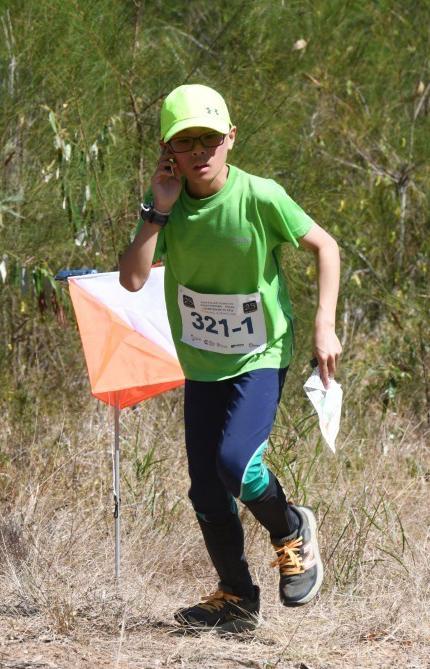



M16 club points events
1 Matty Maundrell BS A 99.14 3233AS
2 Rory Shedden SH N 98.34 3233AS
3 Christopher Drury WO W 94.25 3132AS
4 Matthew Layton NE V 92.81 3133AL
5 Rohan Braid KO W 89.62 33ASAL
6 Isaac Butler AL T 77.34 32ASAL
7 Ho Lam Marcus Cheung WH N 69.67 3133AS
8 Edwin Rapley EV T 68.66 ASALAM
9 Thomas Caristo EN Q 66.88 3133AS
10 Alex Vanzella RR Q 63.33 ASALAM
M18 club points events
1 Duncan Still SW S 100.00 ASALAM
2 Marcus Cazzolato SW S 95.59 3132AS
3 Lachlan Braid KO W 92.53 313233
4 Ben Marschall SW S 92.14 313233
5 Oliver Bishop PO A 90.44 313233
6 Austin Clem SW S 85.82 32ASAL
7 Joshua Mansell BS A 70.38 ASALAM
8 Lachlan Coady WH N 61.64 ASALAM
M35 club points events
1 Richard Goonan EU V 100.00 ASALAM
2 Eric Smyth SO Q 100.00 313233
3 Andrew Slattery RR A 96.29 32ALAM
4 Vivien de Remy de Courcelles WH N 74.20 3133AM
1 Grant Bluett AO A 100.00 33ALAM
2 Craig Dufty BO W 97.43 3233AS
3 Andy Hogg PO A 93.97 3233AS
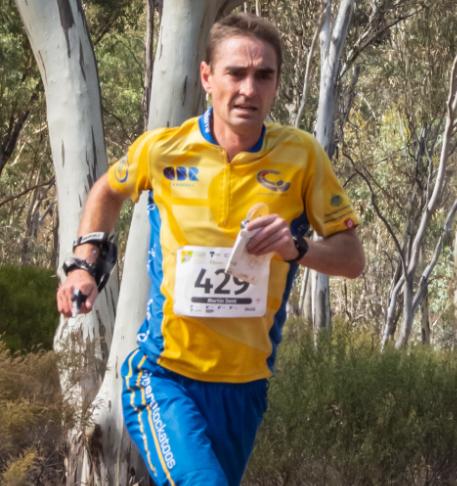
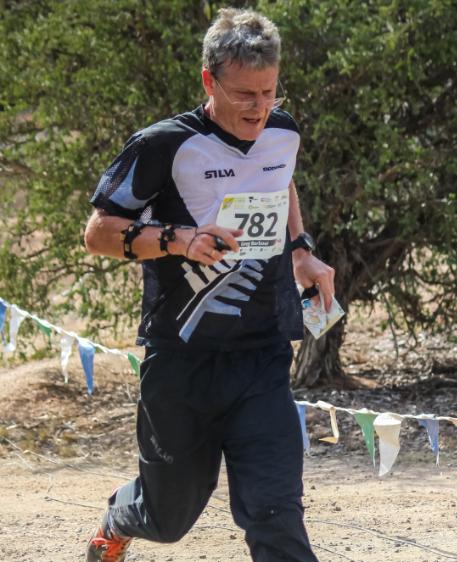




When do you use the ‘SIAC battery test’ and when the ‘SIAC test’?


Most orienteers can probably answer this question straight away. However, there are still occasional uncertainties about when to use these two test stations. The SIAC Battery Test station is set up in the competition centre. Here, orienteers can check the current battery voltage of their SIAC well before their start. If you hear a normal beep when punching, the battery is fine. If you hear a warning signal – several beeps at a higher frequency – this indicates that the battery voltage is low. You should then check the battery date on the SPORTident website and, if necessary, send your SIAC in for a battery replacement. The SIAC Test station is a fixed part of the start area. Despite all of the organiser’s precautions, it can happen that a runner enters the start area without having activated their SIAC. This can be easily checked using the SIAC Test station: As soon as the SIAC is within range (up to 40 cm), it reacts just like with a normal station, with a beep and a flash. The usual and recommended sequence in the start area is:
CLEAR: All previous time stamps are deleted
CHECK: The SIAC memory is checked & AIR+ mode activated SIAC TEST ensures that the AIR+ mode has been successfully activated.

COURTESY OF SA ORIENTEER ISUUE 4/2025
Abigail and Joanna George have achieved a superhuman trifecta, three times winners of the World Rogaining Championships in the Women’s Youth class. In 2022 and 2023 they formed a team with Meredith Norman, but in 2025 Meredith was unfortunately too old to race with the Youth team.
2025 19th World Champs, Spain: 1st Women’s Youth (Cat:WY)
Joanna George, Abigail George 2023 18th World Champs, USA: 1st Women’s Youth (Cat: WY)
Joanna George, Abigail George, Meredith Norman
2022 17th World Champs, Czech Republic: 1st Women’s Youth (Cat: WY) Joanna George, Abigail George, Meredith Norman

Orienteering Australia is developing a nationally branded Come and Try program called Discover Orienteering, designed as the perfect entry point for newcomers to the sport. The program will feature fun, easy-to-learn courses, clear instruction and extra activities to make each event engaging and social. A successful pilot held in the ACT has already shown great promise. Keep an eye out for the official national launch at the start of 2026.
Quiz answers: 1A, 2C, 3C.
The highest point is the hill in the south-west.

ANZ Australia-New Zealand
AO The Australian Orienteer
AOC Australian Orienteering Championships
ASC Australian Sports Commission
ASOC Australian Schools Orienteering Championships
EOC European Orienteering Championships
EYOC European Youth Orienteering Championships
IOF International Orienteering Federation
JWMTBOC Junior World Mountain Bike Orienteering Championships
JWOC Junior World Orienteering Championships
MTBO Mountain Bike Orienteering
NOL National Orienteering League
OA Orienteering Australia
SCJC Southern Cross Junior Challenge
WMMTBOC World Masters Mountain Bike Orienteering Championships
WMTBOC World Mountain Bike Orienteering Championships
WOC World Orienteering Championships
WRE World Ranking Event























Dec 27-31 Xmas 5 Days 2025 Lake Macquarie, NSW
Jan 24-26
March 1-6
Apr 3-6
Apr 3-6
Apr 24-26
May 27-31
June 25-27
June 28 - July 4
July 6-11
July 19-25
Oceania Sprint Champs 2026
Central Coast, NSW
World Ski-O Champs 2026
Japan
Australian 3 Days & Australian O Championships 2026 Tasmania
New Zealand O Champs 2026
Wairarapa, New Zealand
Orienteering World Cup Round 1
Switzerland
Orienteering World Cup Round 2
Sweden
European Youth Orienteering Championships 2026
Slovenia
JWOC 2026
Karlskrona, Sweden
WOC Sprint 2026
Genova, Italy
O-RINGEN 2026
Göteborg, Sweden
July 26-30 OO Cup 2026, Killarney, Ireland
July 27-Aug 2
Aug 5-9
Aug 8-14
Aug 25-30
Sept 9-13
Sep 23-27
Sep 26-Oct 3
Oct 8-11Preliminary dates
Nov 7-13
Nov 12-15
FISU World Uni Orienteering Champs 2026, Portugal
Orienteering World Cup Round 3
Vyšší Brod, South Bohemia, Czechia
WMOC 2026
Rzeszów, Poland
WMTBOC & JWMTBOC 2026 Mora, Sweden
WMMTBOC 2026
Forres, Scotland, UK
Orienteering World Cup Final & EOC 2026, Lithuania
Oceania O Championships 2026-27, ASOC & SCJC 2026, ACT
AUS MTBO Championships 2026
Ballarat & Creswick, Victoria
Asian OC 2026, Asian Junior & Youth OC 2026, China
South American Orienteering Championships 2026
Chile
June 2-6
June 10-16
June 25-28
July 2-6


July 11-17
Aug 9-14
Sep 29 - Oct 3
Oct 30-31
Nov 9-14
Preliminary dates
April 26-30
Preliminary dates
July 10-16
Preliminary dates
Oct 27 - Nov 3
Preliminary dates
Nov 3-7
Preliminary dates
Orienteering World Cup Round 1
Sweden
WMTBOC & JWMTBOC 2027
Latvia
European Youth Orienteering Championships 2027 Latvia
Orienteering World Cup Round 2 Czechia
JWOC 2027
Kłodzko Valley, Poland
WOC 2027
Veszprém, Hungary
Orienteering World Cup Round 3 & EOC 2027, Switzerland
Orienteering World Cup Final
Spain
World Trail O Championships 2027
United States
WOC Sprint 2028
Spain
JWOC 2028
Finland
WMOC 2028
Turkiye
Orienteering World Cup Final & EOC 2028, Portugal
O Championships, sprint
May 2-4
June 7-8
August
August 29
September 6
September 12-13
September 19-20

May 21-29
O Champs, middle & long

